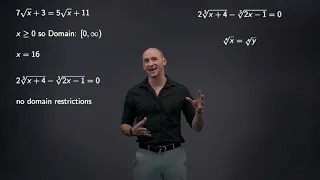
Solving Radical Equations Video 4
Solving equations with multiple radicals
Problem: Solve the following equations.

Solving equations with multiple radicals
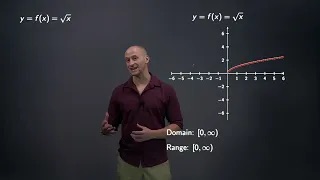
Explaining the general properties of even and odd root functions

Solving equations with odd radicals
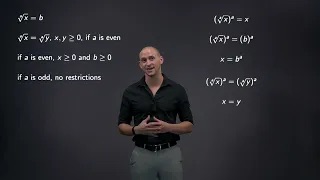
Explaining how to solve radical equations and then solving example problems
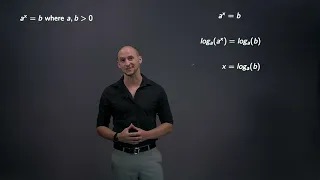
Explaining how to solve equations with power and exponential terms
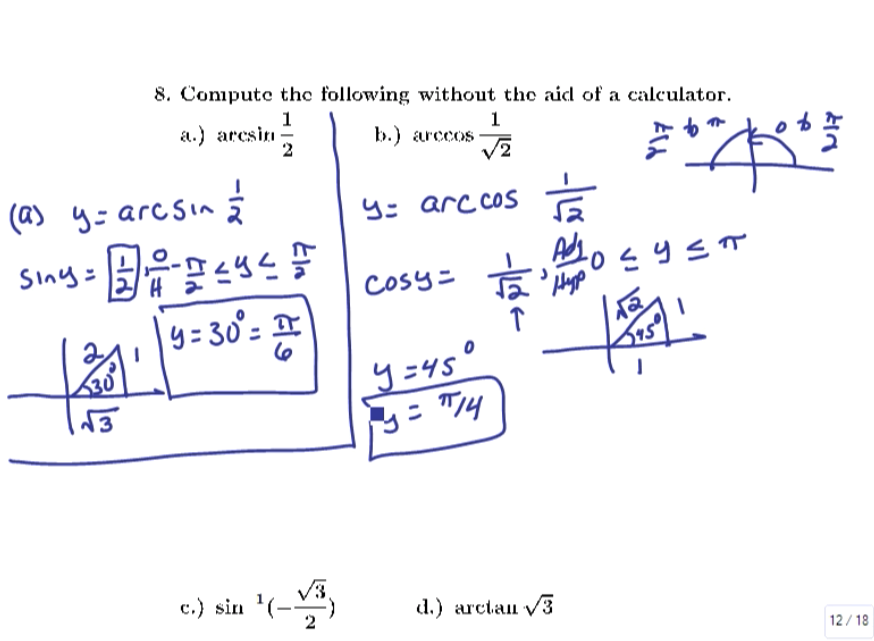
Properties and derivatives of inverse trigonometric functions

Properties and derivatives of inverse trigonometric functions

Properties and derivatives of inverse trigonometric functions

Properties and derivatives of inverse trigonometric functions
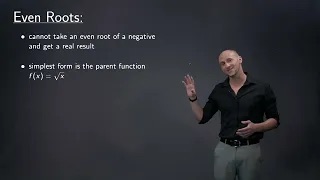
Explaining domain restrictions for denominators, even roots, and logarithms
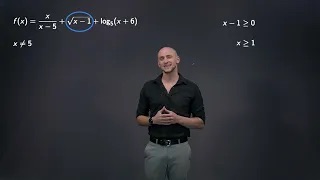
Finding the domain of a function with a denominator, square root, and logarithm
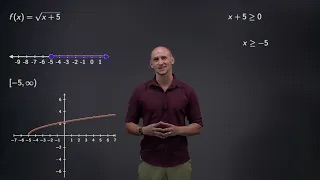
Finding the domain of even and odd roots
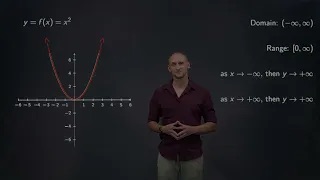
Explaining the graph and properties for the parent function of quadratics
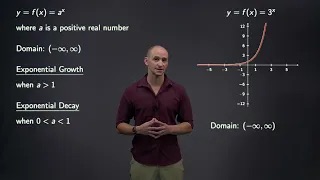
Properties of exponential growth and decay functions
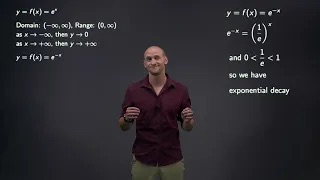
Properties of the exponential function with base e

Explaining the basic properties of logarithmic functions
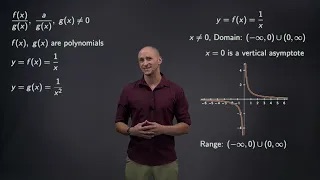
Discussing parent functions of rational functions and their properties
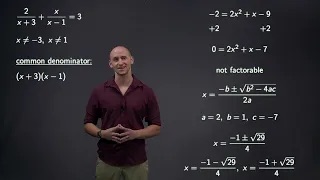
Solving an equation that contains rational expressions
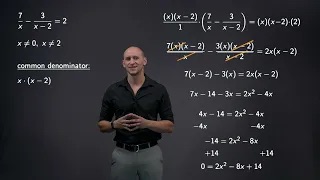
Solving an equation that contains rational expressions
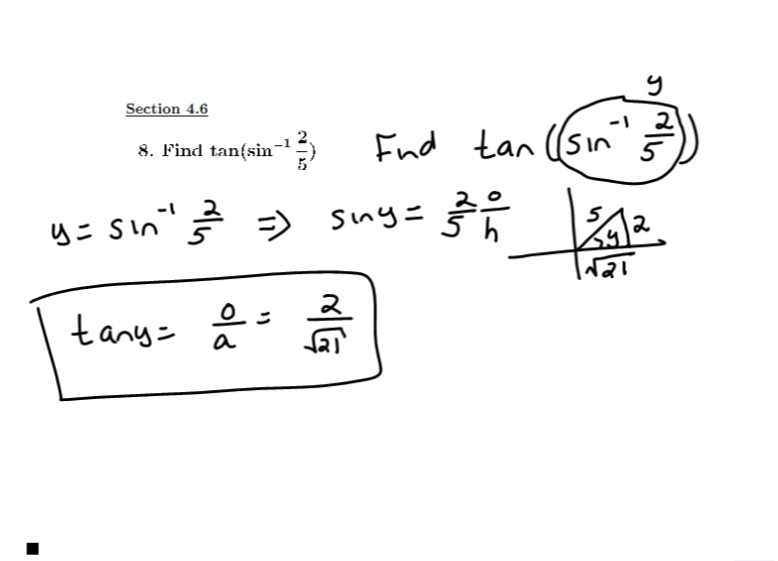
Review of limits and derivatives of inverse trigonometric functions
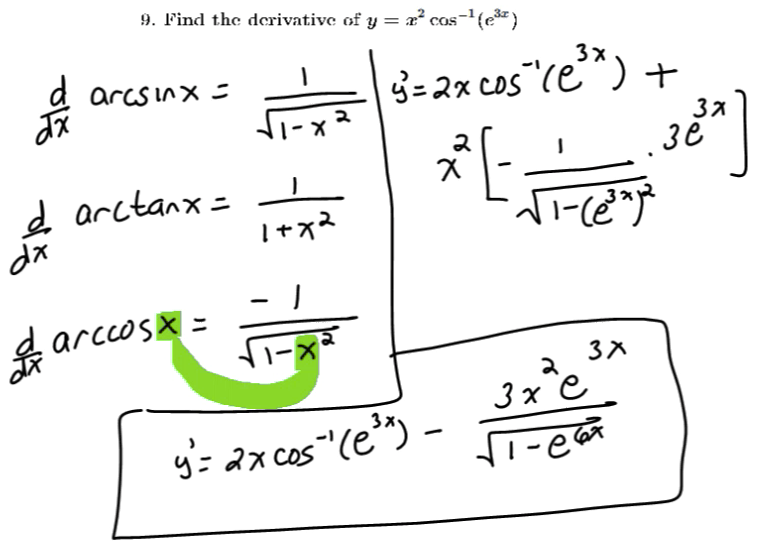
Review of limits and derivatives of inverse trigonometric functions

Continuity of Functions and the Intermediate Value Theorem

Review of limits and derivatives of inverse trigonometric functions

Review of limits and derivatives of inverse trigonometric functions

Continuity of Functions and the Intermediate Value Theorem

Finding and sketching the domain of a function of two variables

Finding and sketching the domain of a function of two variables
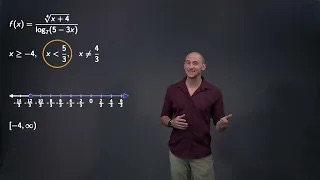
Finding the domain of a function with a root and a logarithm in the denominator
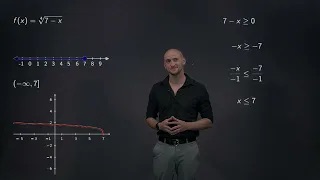
Finding the domain of functions with even and odd roots
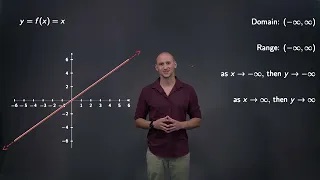
Discussing properties of linear functions
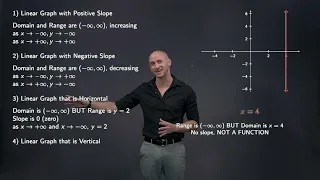
Discussing the types of linear graphs including horizontal and vertical lines and their properties
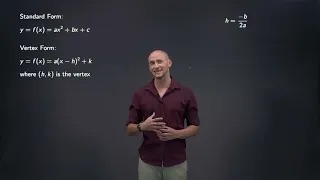
Discussing properties of quadratic functions including the vertex, domain, range, and end behavior

Explaining when a quadratic equation does not have a real solution
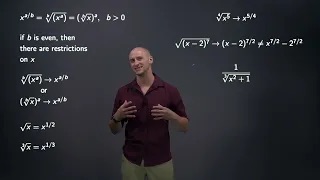
How to rewrite radical terms as power terms

Explaining how to solve logarithmic equations

Solving logarithmic equations with a single logarithm term

Solving logarithmic equations with multiple logarithm terms

Solving logarithmic equations with multiple logarithm terms on both sides

Solving equations that contain rational expressions

Sketching the level curves for a function of two variables

Determining if a graph represents a function and finding the domain and range

Determining the domain and range of a relation and if the relation is a function

Determining the domain and range of a relation and if the relation is a function

Determining the domain and range of a relation and if the relation is a function
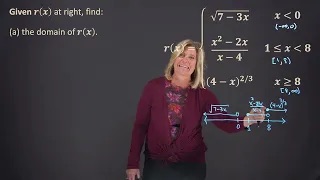
Finding the domain of a piecewise function and evaluating it
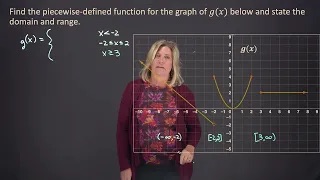
Finding the piecewise-defined function for a given graph along with its domain and range
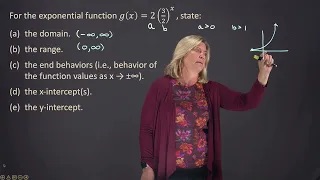
Finding the properties of an exponential function including domain, range, end behavior, and intercepts
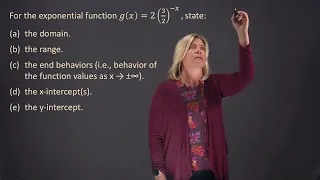
Finding the properties of an exponential function including domain, range, end behavior, and intercepts

Finding the properties of an exponential function including domain, range, end behavior, and intercepts

Finding the domain of a function that is a fraction containing an exponential and root

Finding the domain of a function that is a fraction containing an exponential and root

Finding the domain of a function that is a fraction containing exponentials and a square root

Finding the domain, range, end behavior, and intercepts for a logarithmic function

Determining where a piecewise function is continuous algebraically

Finding the domains of functions

Finding the domains of expressions
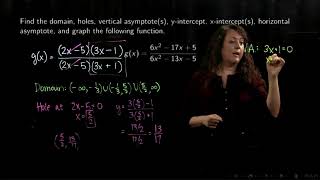
Determining the properties of a rational function and graphing it
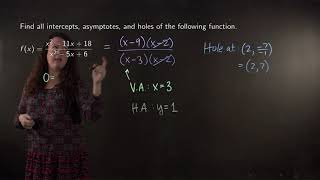
Determining the properties of a rational function and graphing it

Restricting the domain of a function so it is one-to-one and has an inverse

Determining algebraically the inverse of a function

Determining algebraically the inverse of a function

Determining algebraically the inverse of a function
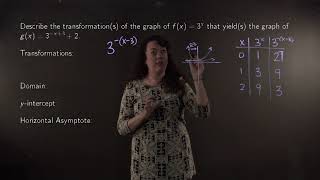
Determining properties of an exponential function
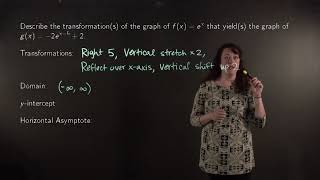
Determining properties of an exponential function
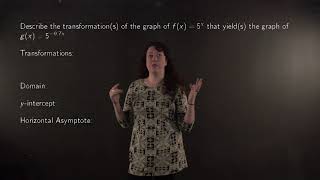
Determining properties of an exponential function
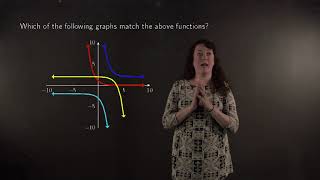
Identifying the graph of an exponential function
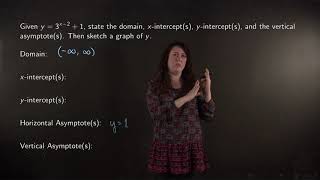
Determining properties of an exponential function
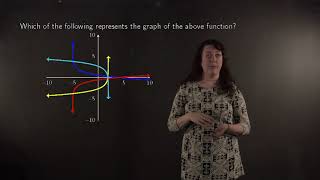
Determining the graph of a logarithmic function

Determining the graph of a logarithmic function

Solving an equation with an exponential function

Solving an equation with exponential functions by factoring

Using a graph to evaluate a function

Review of limits, continuity, and the Intermediate Value Theorem
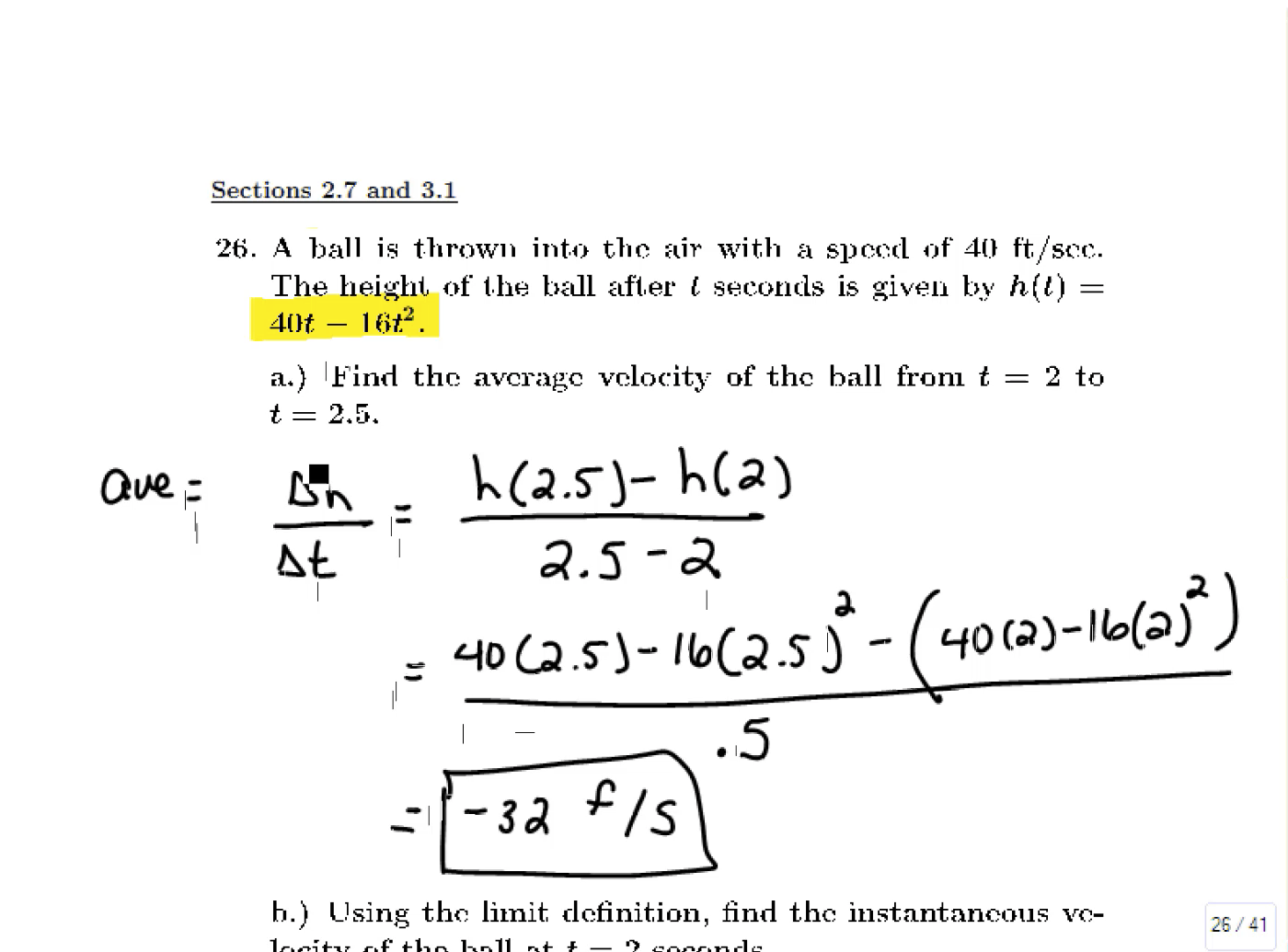
Review of the limit definition of a derivative and calculating the derivative

Review of the limit definition of a derivative and calculating the derivative
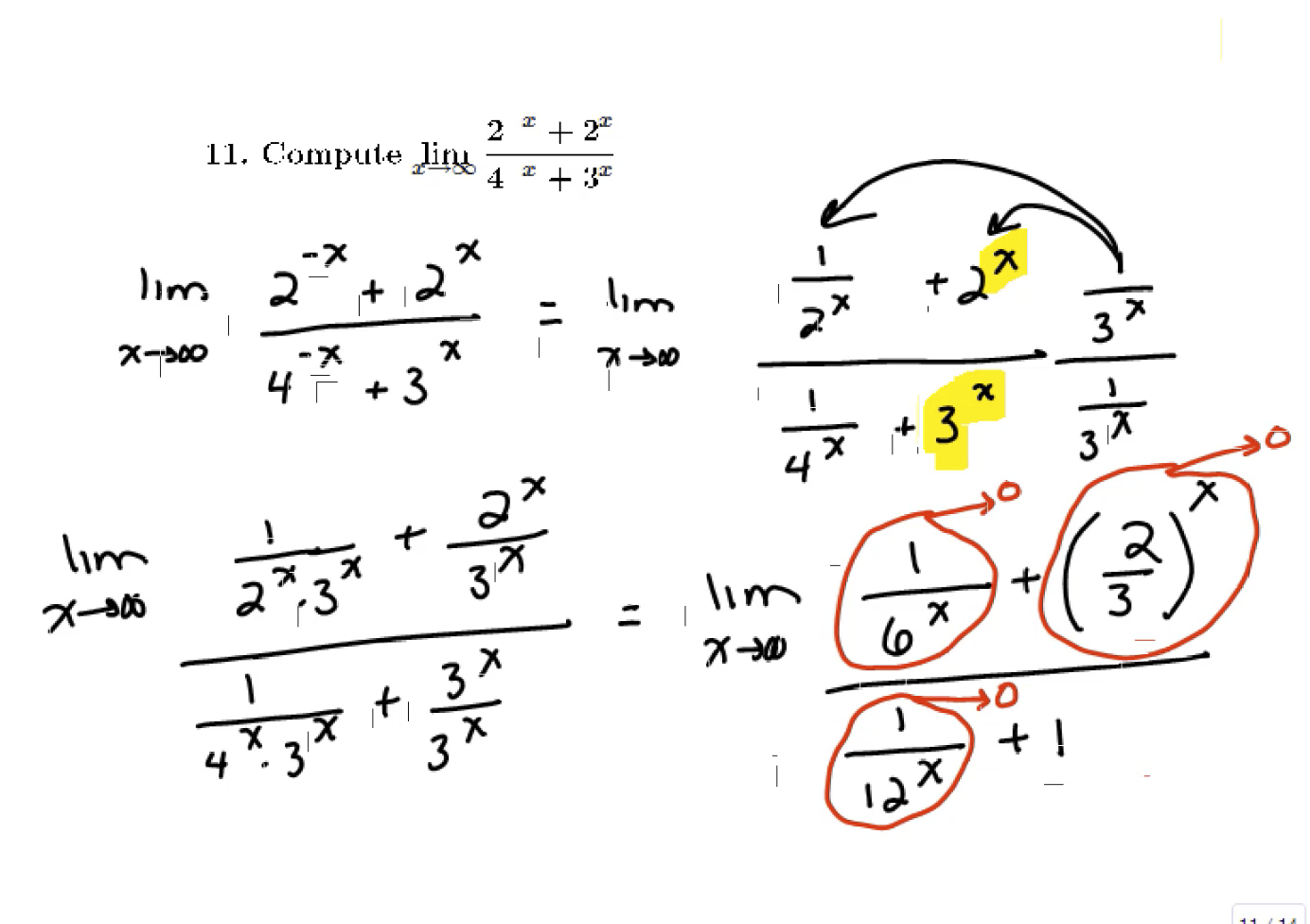
Approximation and Newton's Method, and limits and derivatives of exponential functions

Review of the limit definition of a derivative and calculating the derivative

Review of the limit definition of a derivative and calculating the derivative
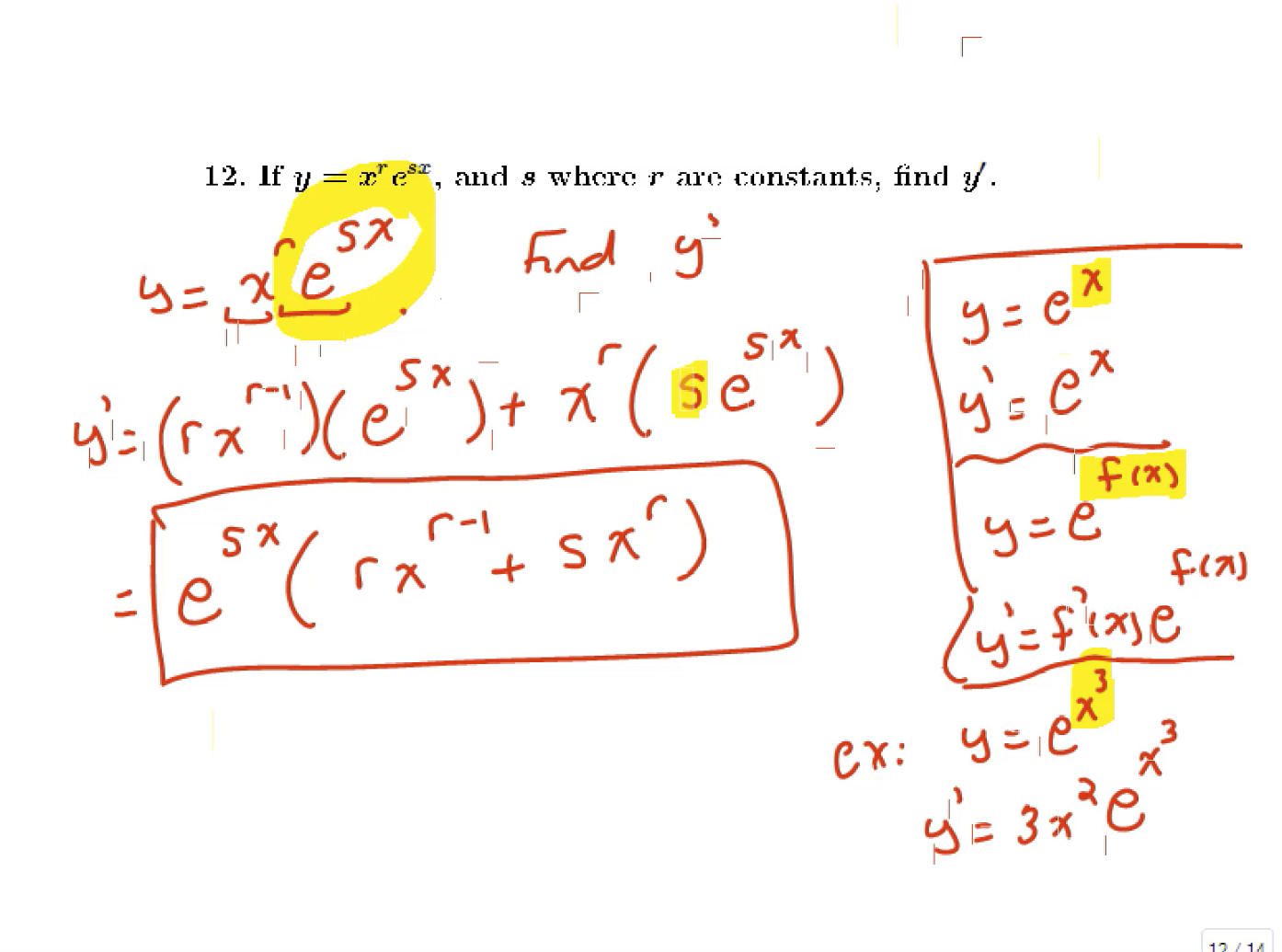
Approximation and Newton's Method, and limits and derivatives of exponential functions

Using derivatives to find properties of graphs
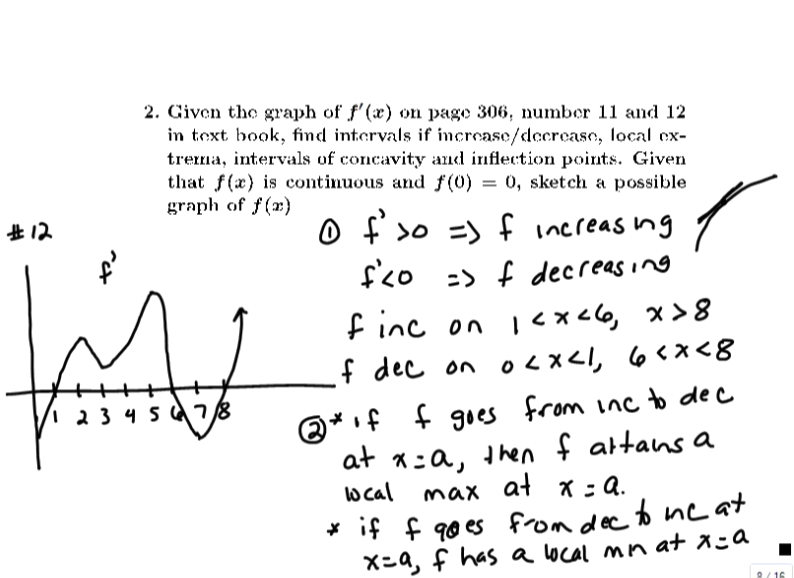
Using derivatives to find properties of graphs

Converting parametric equations into a Cartesian equation and graphing
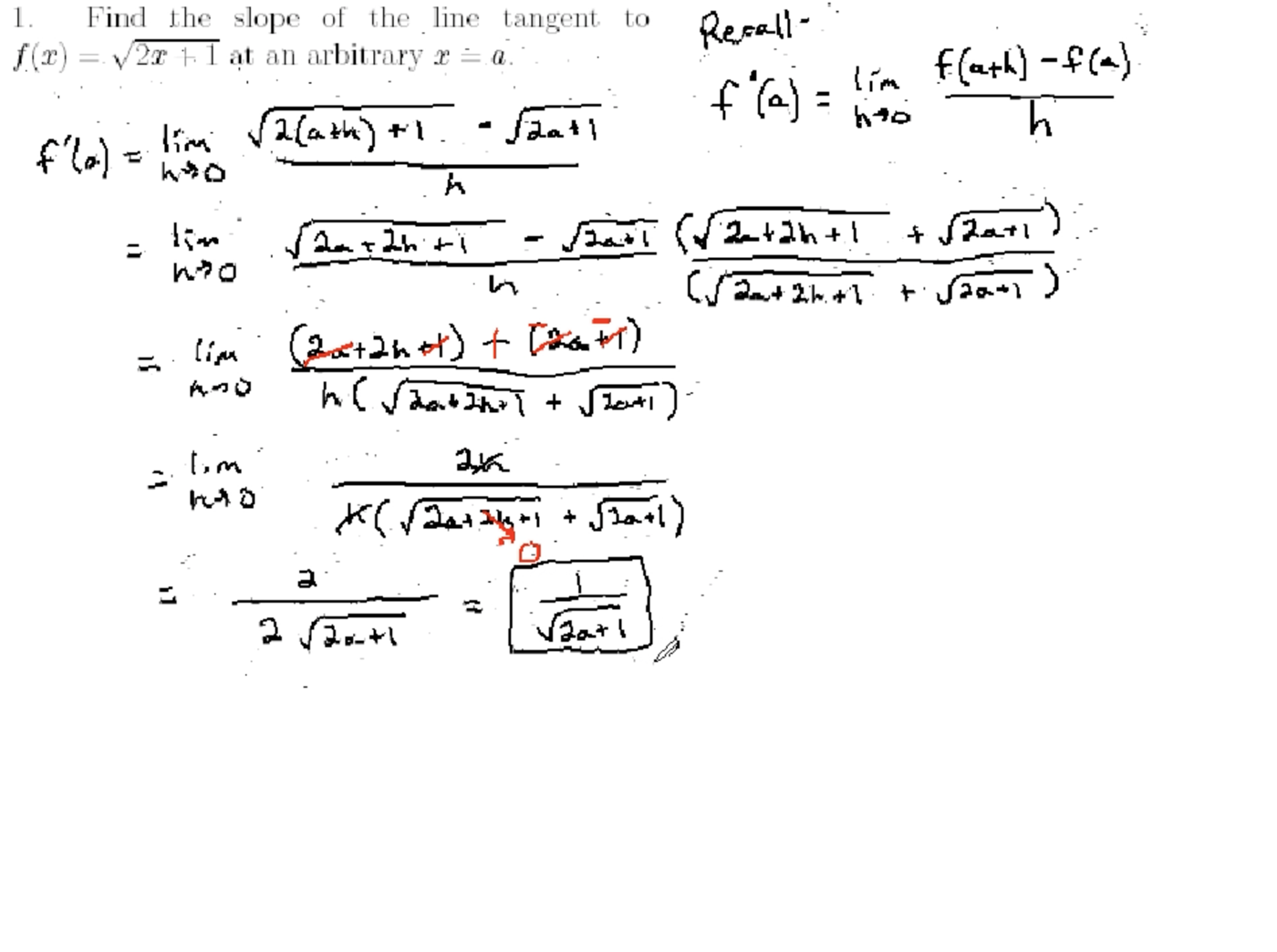
Using the limit definition to find derivatives of functions and vector functions

Review of limits, continuity, and the Intermediate Value Theorem

Review of the limit definition of a derivative and calculating the derivative

Review of the limit definition of a derivative and calculating the derivative
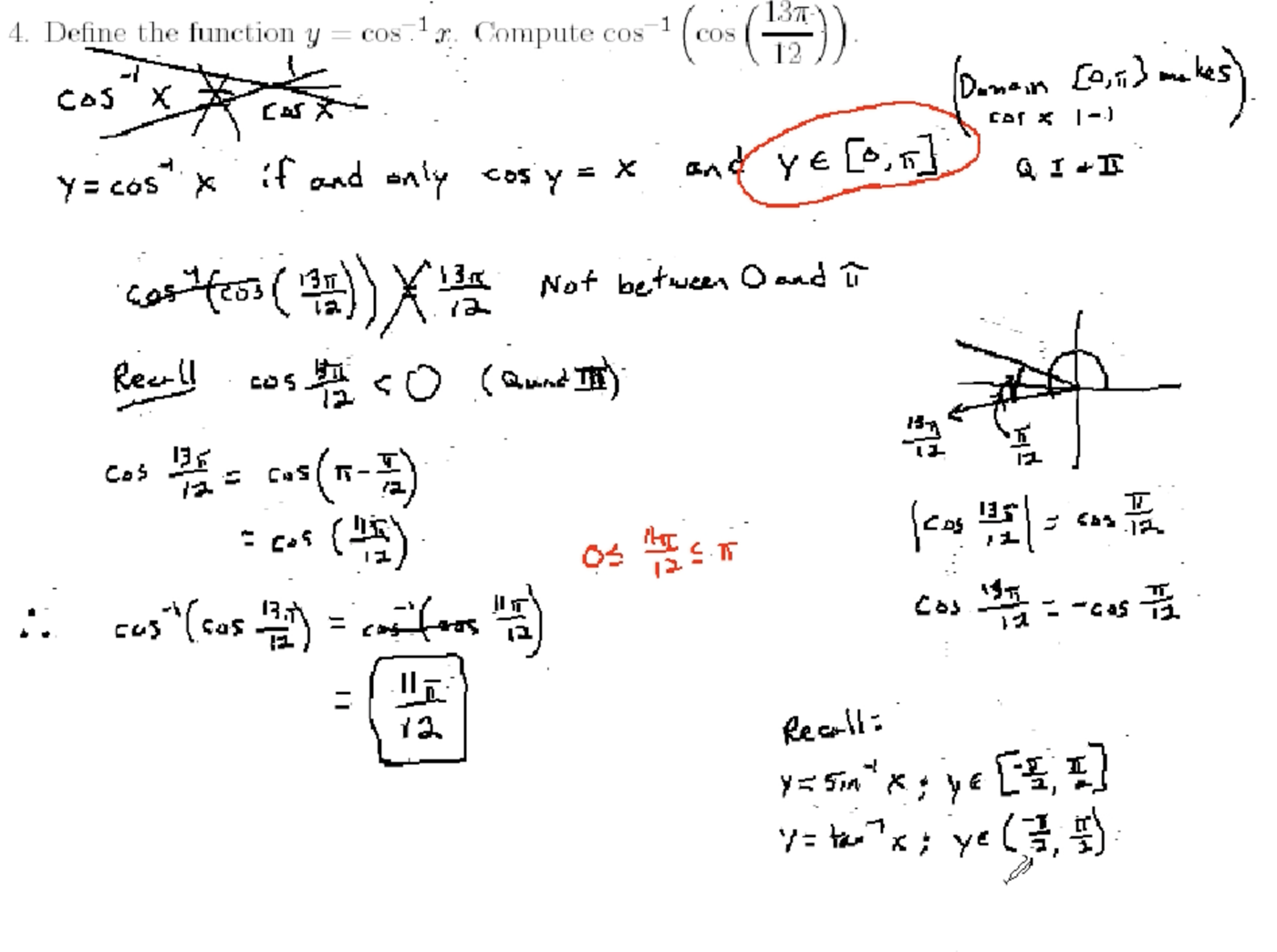
Properties of inverse trig functions and the derivative of arctangent

Approximation and Newton's Method, and limits and derivatives of exponential functions

Using the limit definition to find derivatives of functions and vector functions

Using the limit definition to find derivatives of functions and vector functions

Review of the limit definition of a derivative and calculating the derivative

Review of the limit definition of a derivative and calculating the derivative

Approximation and Newton's Method, and limits and derivatives of exponential functions

Properties of inverse trig functions and the derivative of arctangent

Using derivatives to find properties of graphs

Using derivatives to find properties of graphs

Determining the domain of a three-dimensional vector function
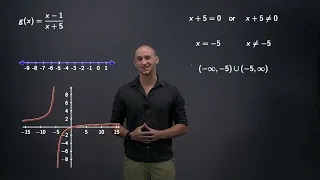
Finding the domain of several rational functions
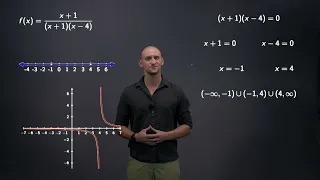
Finding the domain of a rational function
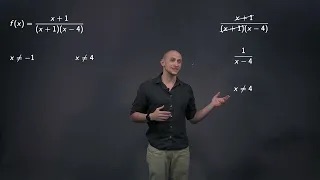
Explaining how to find any holes and vertical asymptotes of a rational function
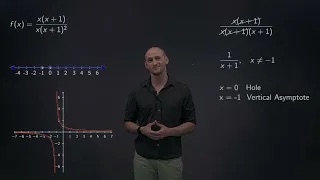
Finding the domain of a rational function using factoring
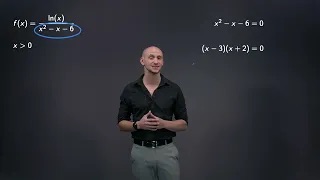
Finding the domain of a function with a natural logarithm and denominator
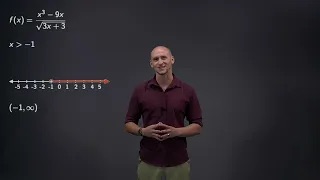
Finding the domain of a function with a square root in the denominator
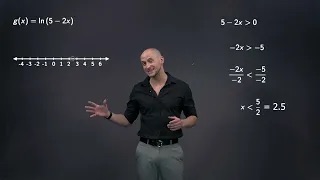
Finding the domain of a logarithmic function
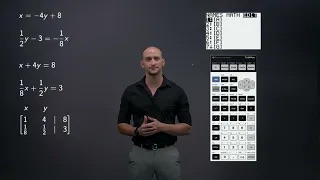
Solving a system of two linear equations using a TI-84 calculator
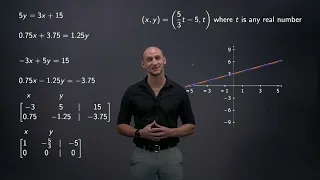
Solving a system of two linear equations using a TI-84 calculator

Discussing how to write the equation of a line through two given points
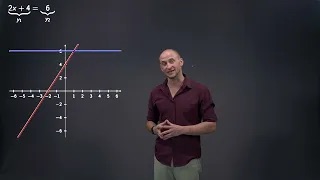
Solving a linear equation algebraically and showing how this relates to the graph
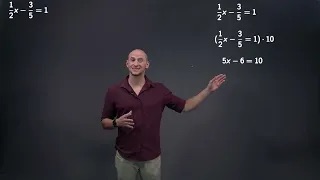
Solving a linear equation algebraically

Solving a linear equation algebraically and showing how this relates to the graph
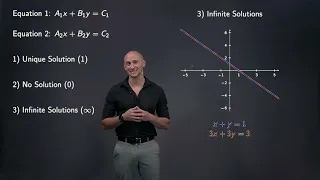
Explaining the format and possible solutions for a system of two linear equations
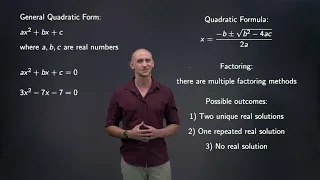
Explaining the standard form for a quadratic equation and the possible number of solutions

Solving quadratic equations with the difference of two squares formula
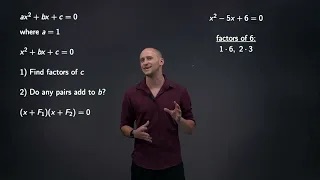
Solving quadratic equations by factoring

Solving a quadratic equation by factoring

Solving a quadratic equation by factoring
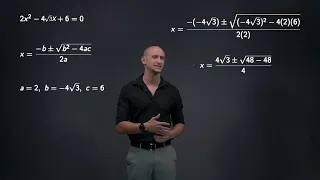
Solving quadratic equations with the quadratic formula and discussing the number of possible solutions
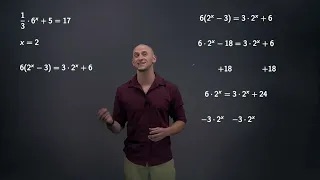
Solving equations with exponential terms

Solving equations with base e exponential terms

Expanding logarithmic expressions using logarithm rules

Condensing a logarithmic expression into a single logarithm

Explaining how to multiply and divide rational expressions
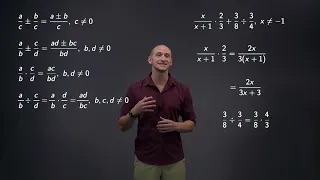
Performing algebraic operations with rational expressions and simplifying the answer

Sketching the level curves for a function of two variables

Evaluating and then finding and sketching the domain of a function of two variables

Finding and sketching the domain of a function of two variables

Explaining the format and possible solutions for a system of two linear equations

Solving a rational equation and checking the solutions

Solving an equation with logarithmic functions
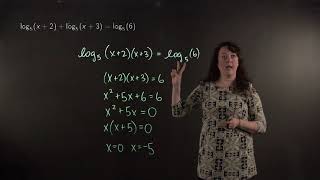
Solving an equation with logarithmic functions

Solving an equation with logarithmic functions

Solving an equation with logarithmic functions

Solving an equation with logarithmic functions

Finding the properties of a quadratic function such as the vertex, axis of symmetry, intercepts, etc.

Finding the roots of a square root function

Finding the domain of a function with a fraction and radicals

Finding the domain of a function with a quadratic inside a square root

Finding the inverse of a square root function and its domain
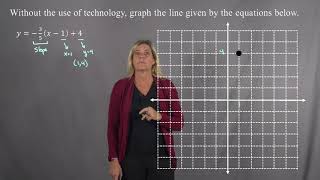
Graphing a line without using technology

Graphing a line without using technology

Graphing a line without using technology

Writing a function for the value of an item depreciating linearly over time
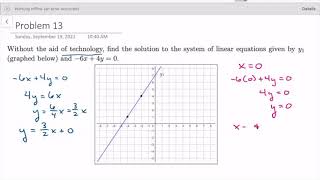
Finding the solution to a system of linear equations by graphing

Graphing the solution set of an inequality with two variables

Graphing the solution set of an inequality with two variables

Graphing the solution set of system of linear inequalities

Explaining how to graph linear inequalities

Graphing two linear inequalities

Sketching the solution set and finding the corner points for a system of linear inequalities

Using a graph to find specific values of a function

Determining the end behavior, real zeros, domain, and y-intercept for a polynomial

Determining the end behavior, real zeros, domain, and y-intercept for a polynomial

Determining the end behavior, real zeros, domain, and y-intercept for a polynomial

Determining the end behavior, real zeros, domain, and y-intercept for a polynomial

Determining the end behavior, real zeros, domain, and y-intercept for a polynomial
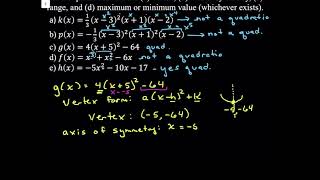
Identifying quadratic functions and their properties
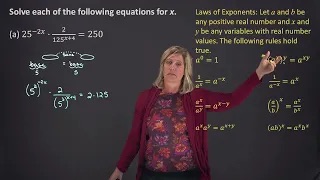
Solving an equation with exponential functions
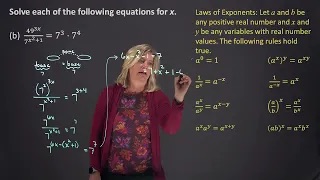
Solving an equation with exponential functions
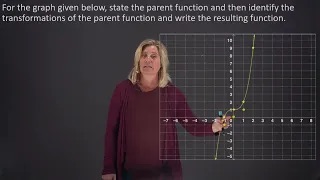
Identifying the parent function and transformations for a given graph
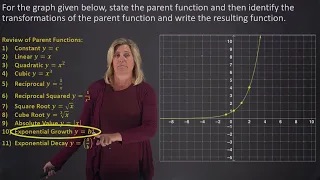
Identifying the parent function and transformations for a given graph
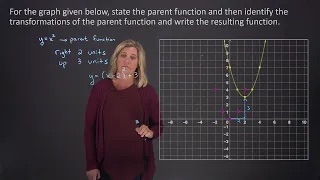
Identifying the parent function and transformations for a given graph

Identifying the parent function and transformations for a given graph

Drawing the graph of a transformed function given the original graph

Evaluating compositions of two given functions and the graph of a third function

Using the Horizontal Line Test to determine if graphs represent invertible functions

Finding the domain of a function containing a logarithm, exponential, radical, and fraction

Solving an equation an exponential function

Finding the domain of a function containing several logarithms

Finding the domain of a function containing a logarithm, exponential, and fraction

Solving an equation with exponential functions

Solving an equation with a logarithmic function

Solving an equation with several logarithmic functions

Finding the domain, intercepts, asymptotes, and holes of a rational function
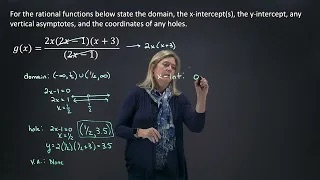
Finding the domain, intercepts, asymptotes, and holes of a rational function
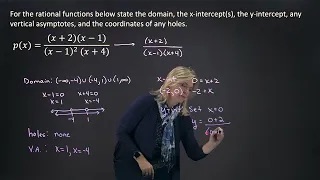
Finding the domain, intercepts, asymptotes, and holes of a rational function

Finding limits from the graph of a piecewise function

Determining where a piecewise function is continuous from its graph

Finding where a function with a fraction and cube root is continuous

Determining where a function with a fraction, square root, and logarithm is continuous

Using the limit definition to find the derivative of a square root function

Determining where the derivative of a function does not exist from a graph

Finding the derivative of a function with a square root and exponential using the Product Rule

Using implicit differentiation to find the derivative of a function

Finding the intervals where a function is increasing/decreasing and the local extrema

Finding intervals of increase/decrease and the local extema for revenue from a word problem

Finding the intervals of concavity and inflection points for a function with exponentials

Determining the intervals of concavity and inflection points from the graph of a function

Using the second derivative test to find local extrema for a function

Finding the absolute maximum and minimum of a rational function on two closed intervals

Finding the absolute maximum and absolute minimum of a rational function on two closed intervals

Finding the selling price of trucks to maximize profit given the cost and price-demand functions

Finding the dimensions of the box with the largest volume given the amount of material to make the box

Finding the minimum cost of a box given the volume and cost of materials

Solving an indefinite integral with a cube root in the denominator using u-substitution

Explaining the Intermediate Value Theorem and the Bisection Method

Using the Intermediate Value Theorem and Bisection Method to approximate the solution of an equation
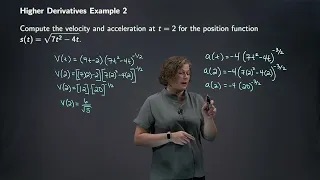
Using derivatives to find the velocity and acceleration functions from the position function
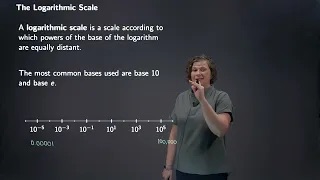
Explaining the definition of logarithmic scale and double-log plots
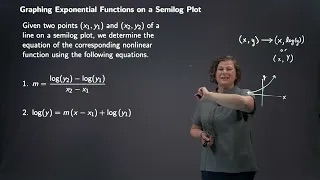
Explaining the logarithmic scale and a semilog plot
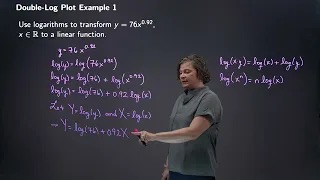
Using logarithms to transform a power function into a linear function
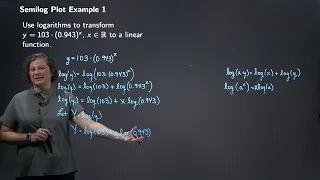
Using logarithms to transform an exponential function to a linear function

Explaining the Sandwich (or Squeeze) Theorem with a graphical example

Solving a limit at infinity using the Sandwich (or Squeeze) Theorem

Simplifying an expression with radicals

Rationalizing the denominator of a fraction with square roots

Rationalizing the denominator of a fraction with square roots

Calculating the difference quotient for function with a square root

Solving an equation using the quadratic formula
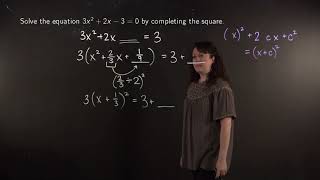
Solving a quadratic equation by completing the square

Solving a polynomial equation using factoring by grouping
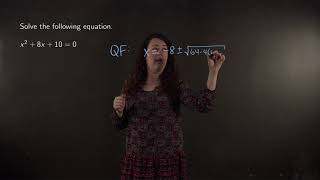
Solving a quadratic equation using the quadratic formula

Determining if an equation represents a function
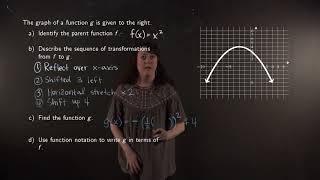
Identifying the parent function and transformations of a function
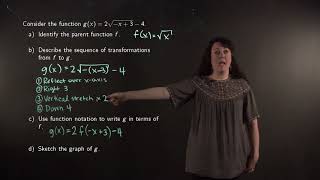
Identifying the parent function and transformations of a function
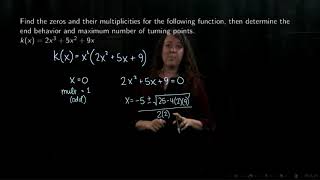
Finding properties of a polynomial including zeros and end behavior
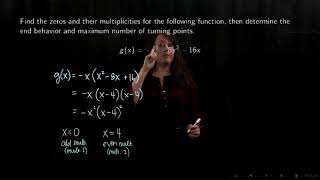
Finding properties of a polynomial including zeros and end behavior
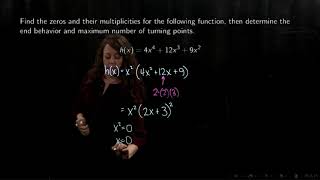
Finding properties of a polynomial including zeros and end behavior
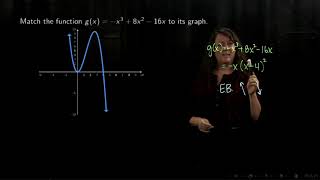
Using properties of a polynomial to find its graph

Graphically verifying if two functions are inverses

Solving an equation with an exponential function

Determining the properties of a logarithmic function
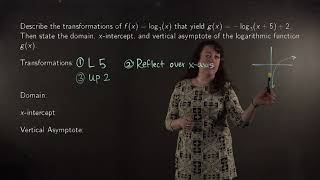
Determining the properties of a logarithmic function

Solving an equation with an exponential function

Solving an equation with an exponential function

Modeling a population size with an exponential function

Determining the properties of a sine function and graphing it

Determining the properties of a cosine function and graphing it

Writing the equation for a sine function to match a given graph

Writing the equation for a cosine function to match a given graph

Solving a trigonometric equation

Solving a trigonometric equation

Solving a trigonometric equation by factoring

Solving a trigonometric equation

Solving a trigonometric equation

Solving a trigonometric equation

Solving a trigonometric equation

Using a double angle formula to solve a trigonometric equation

Using a double angle formula to solve a trigonometric equation

Using a double angle formula to solve a trigonometric equation

Using double angle formulas to evaluate trigonometric functions

Adding and subtracting vectors graphically

Finding the properties of a transformed tangent function and graphing it

Determining if a function is even or odd

Cartesian equations and parametric equations of curves
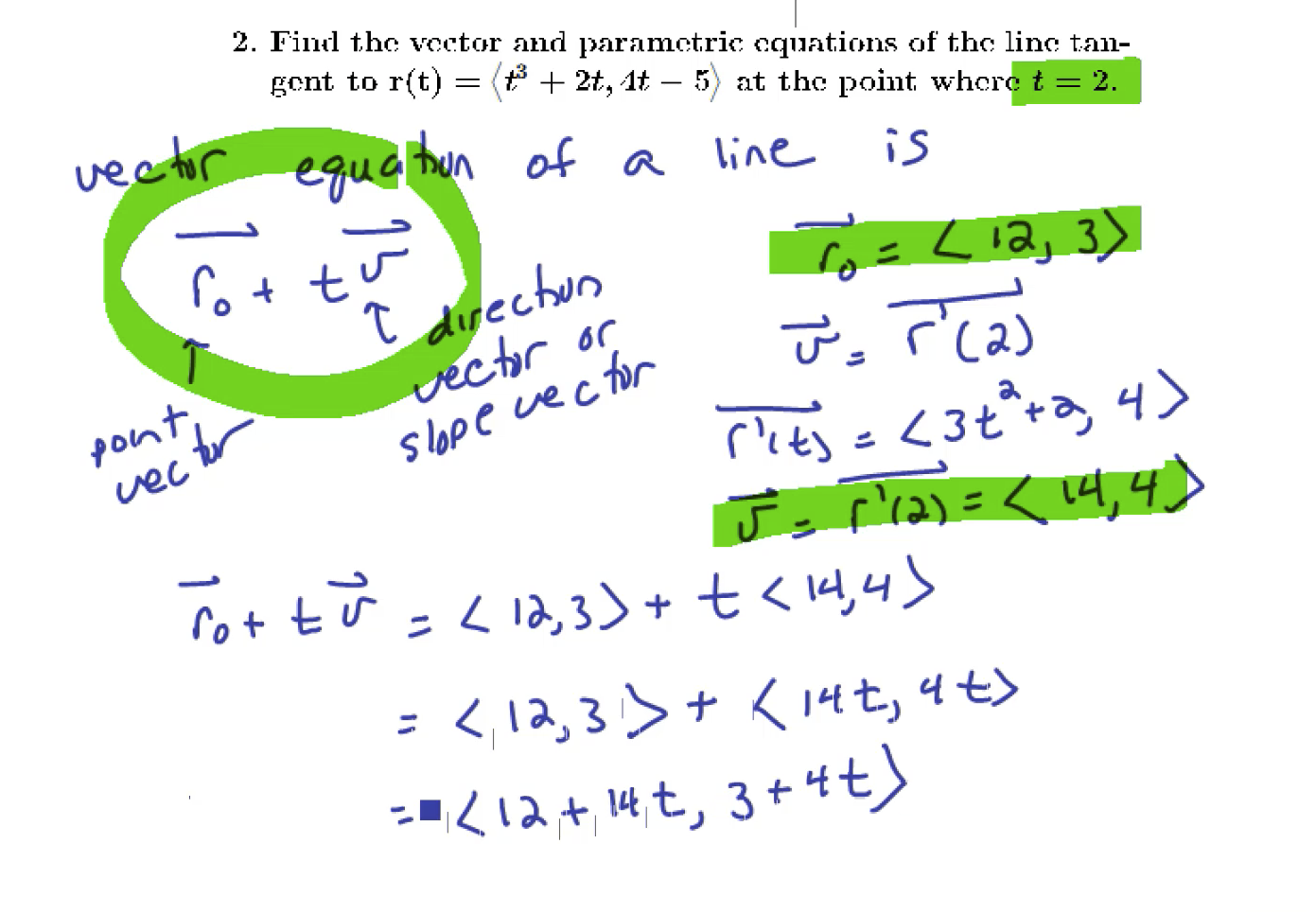
Derivatives and vectors with some physics applications

Review of derivatives and tangent lines to functions and vector equations
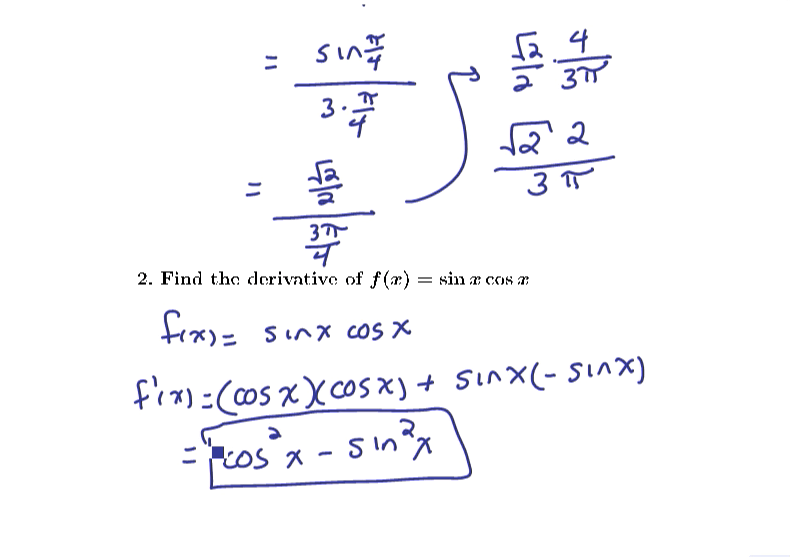
Reviewing the chain rule and the derivatives and limits of trigonometric functions
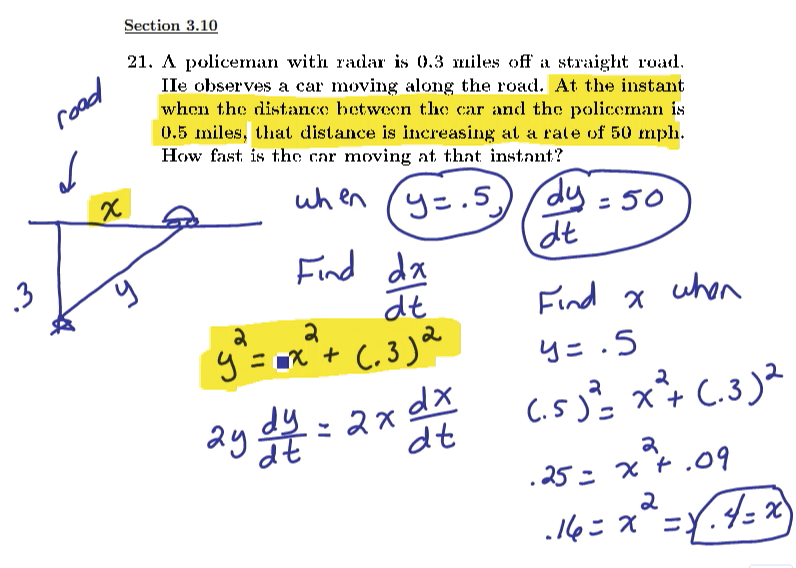
Related rates problems, differentials, linear and quadratic approximations
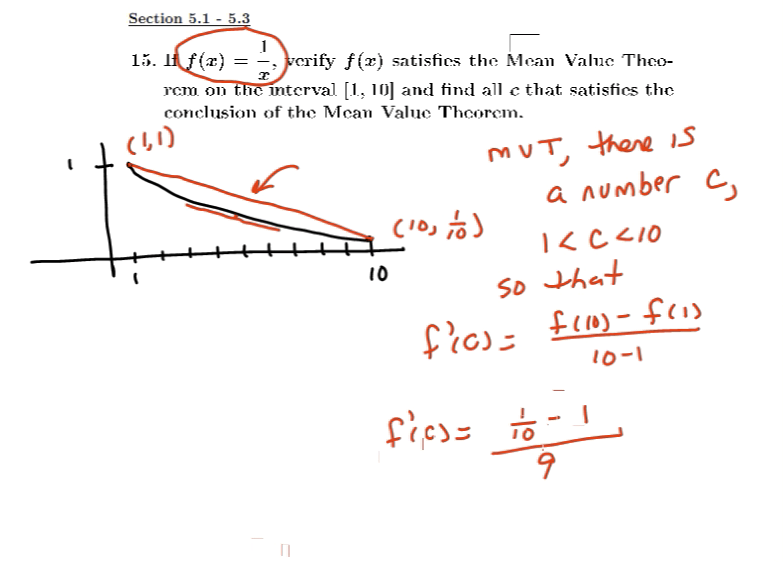
Mean Value Theorem and using derivatives to find the shape of curves
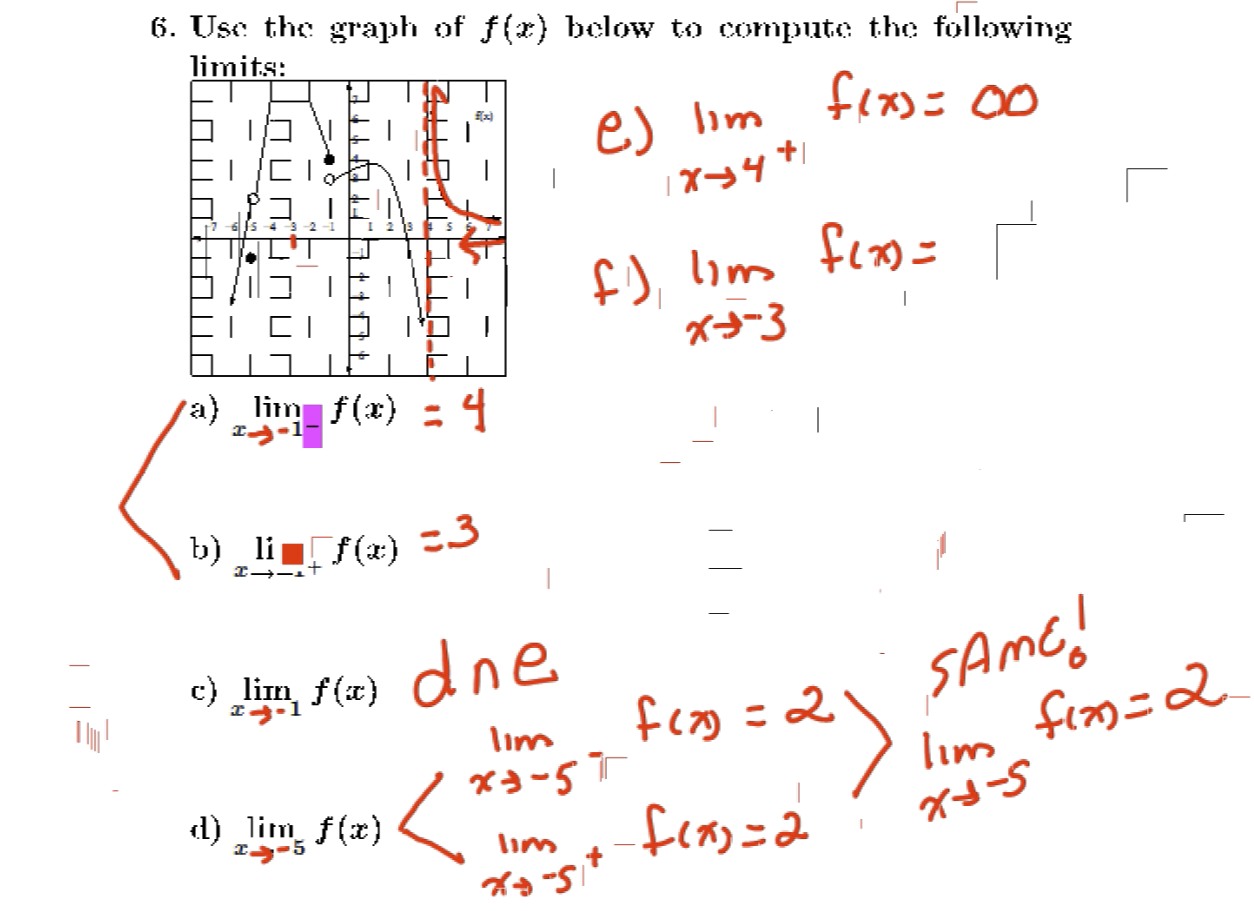
Evaluating limits of functions
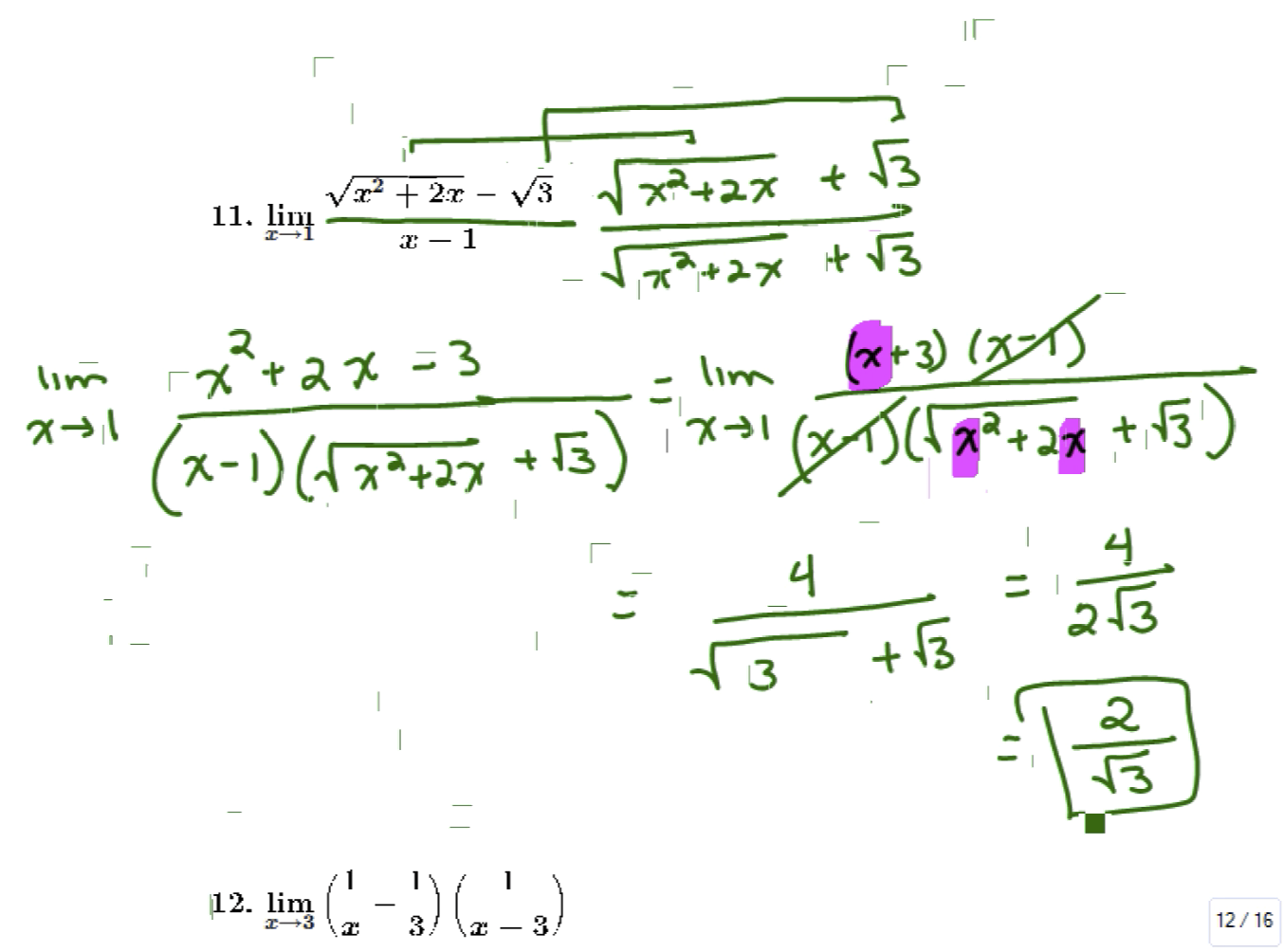
Evaluating Limits of Functions

Review of derivatives and tangent lines to functions and vector equations
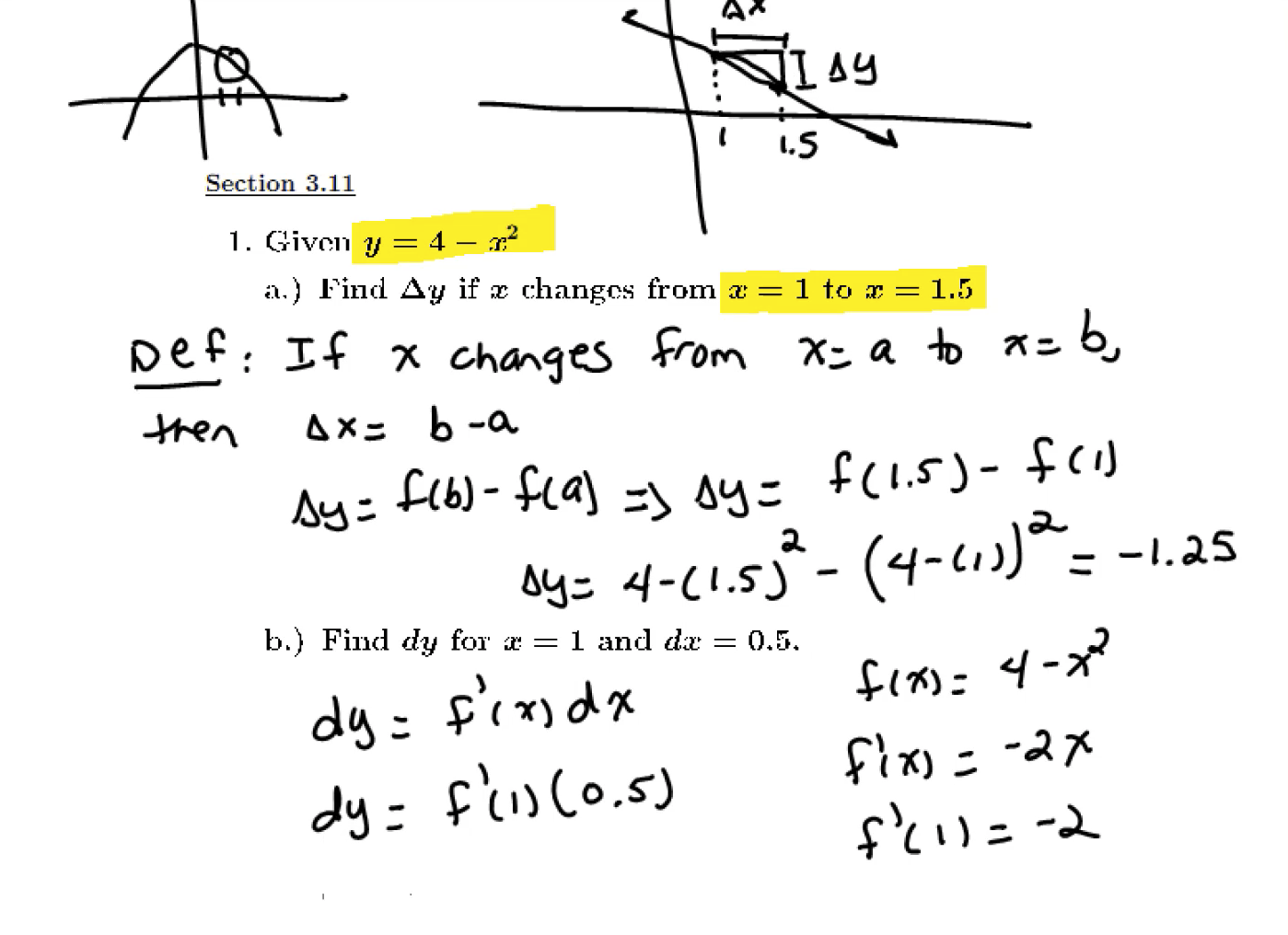
Differentials, linear approximations and quadratic approximations

Derivatives and tangents to curves

Derivatives and vectors with some physics applications
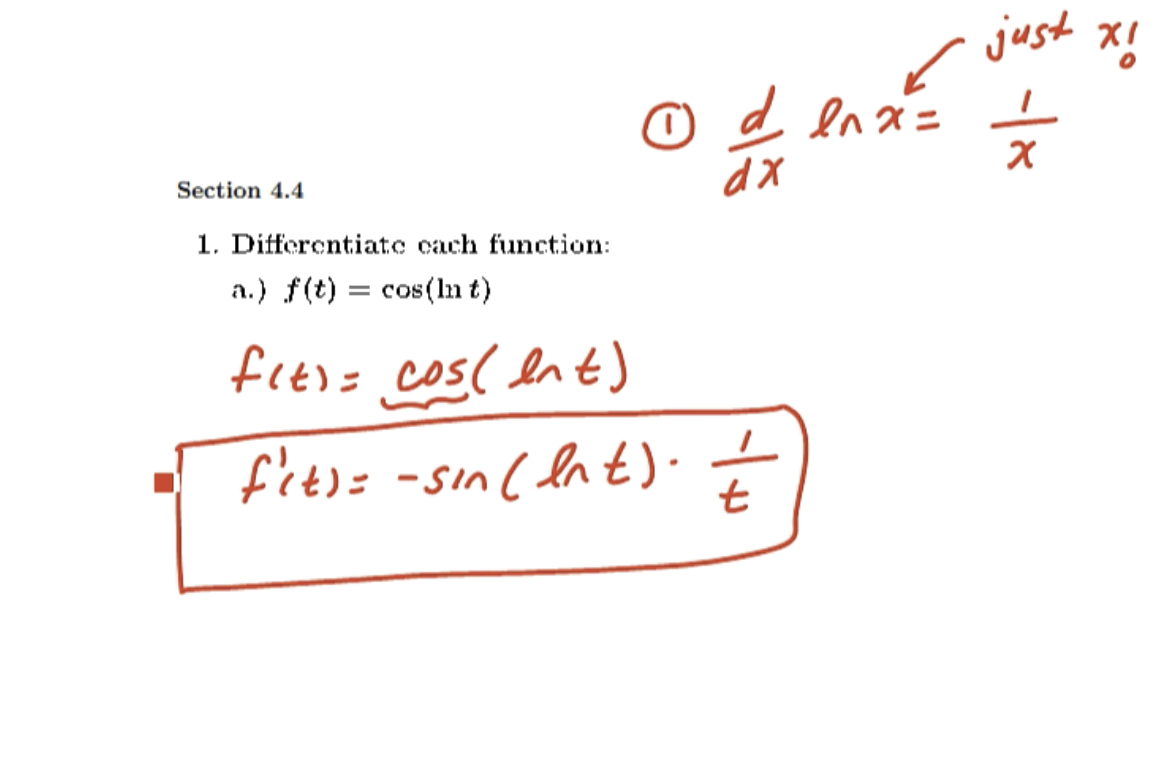
Derivatives of exponential and logarithmic functions and the exponential model

Derivatives and vectors with some physics applications

Derivatives of exponential and logarithmic functions and the exponential model

Riemann sums, including approximating areas under curves.
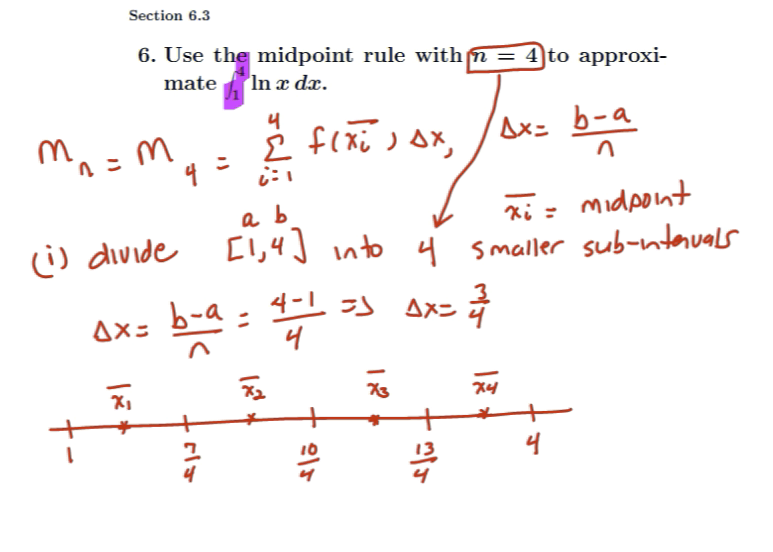
Using Reimann sums and the Fundamental Theorem of Calculus
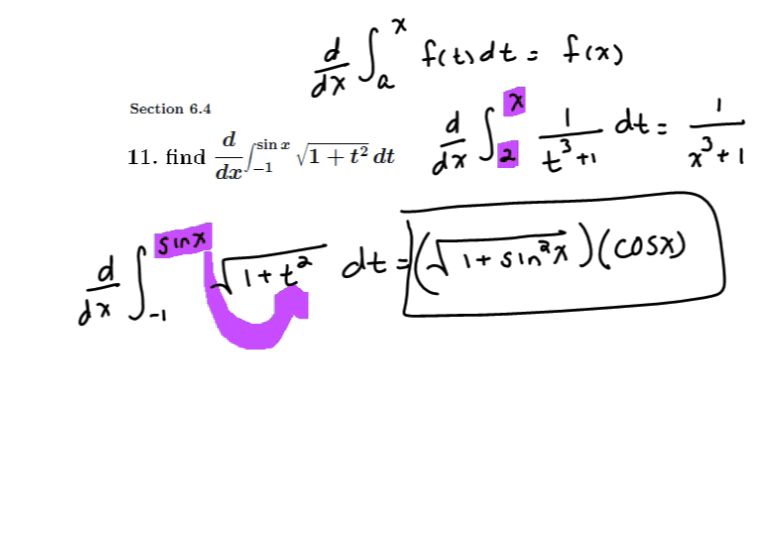
Using Riemann sums and the Fundamental Theorem of Calculus
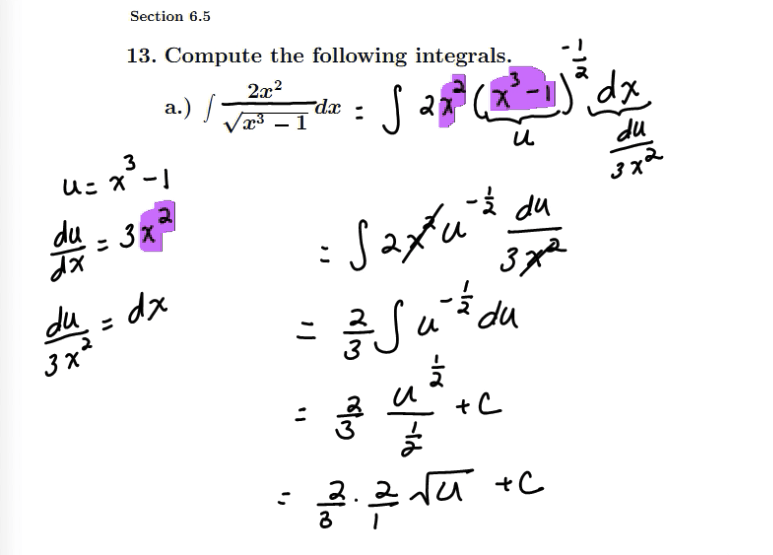
Examples of integration by substitution

Converting parametric equations into a Cartesian equation and graphing

Finding a Cartesian equation for a parametric equation and graphing it

Find the Cartesian form and sketch the graph for the parametric equation of a line

Using the graph of a function to sketch a graph of its derivative

Finding the derivative of a function using the limit definition

Finding the derivatives of compositions of functions from their graphs

Using a linear approximation to approximate the value of a function

Determining the properties of a function from the graph of its derivative

Review of work and average value

Reviewing u-Substitution

Review of finding the radius and interval of convergence for a power series

Review of Taylor and Maclaurin Series and their properties

Review of Taylor Polynomials and Taylor's Inequality

Finding a Taylor Polynomial for a function

Integrating a function with a square root using u-substitution

Finding the area of a region enclosed by two curves

Finding the area of a region bounded by curves

Finding the volume of a solid of revolution using the washer method

Finding the volume of a solid of revolution using cylindrical shells

Using the comparison test to determine if an improper integral converges or diverges

Using the comparison test to determine if an improper integral converges or diverges

Converting parametric equations into a Cartesian equation and graphing

Converting parametric equations into a Cartesian equation and graphing

Converting parametric equations into a Cartesian equation and graphing

Finding the area of a region bounded by two curves

Proving associative and scalar multiplication properties for vectors

Cartesian equations and parametric equations of curves
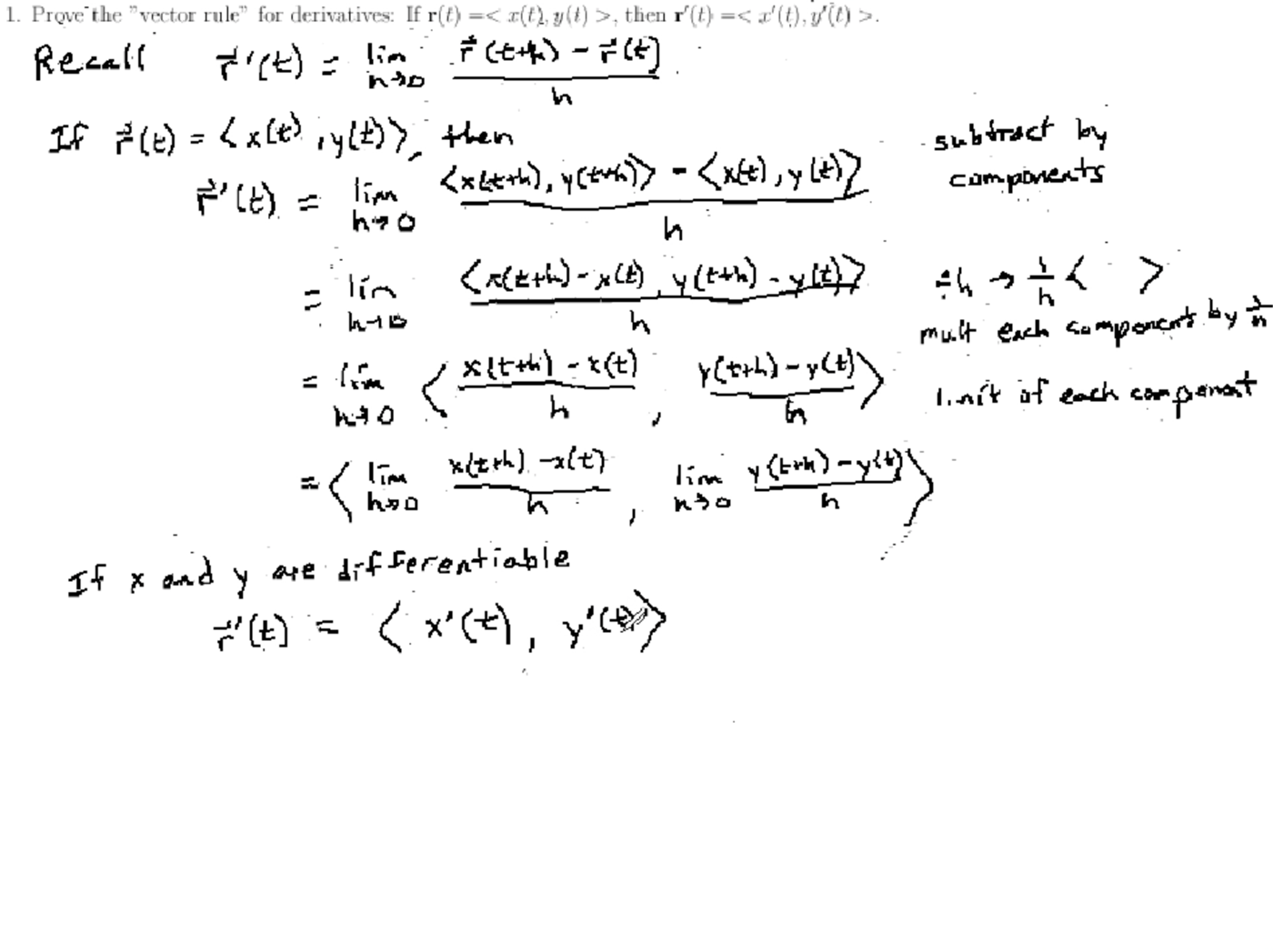
Proving facts about the derivatives of vector functions including the product rule

Derivatives and vectors with some physics applications
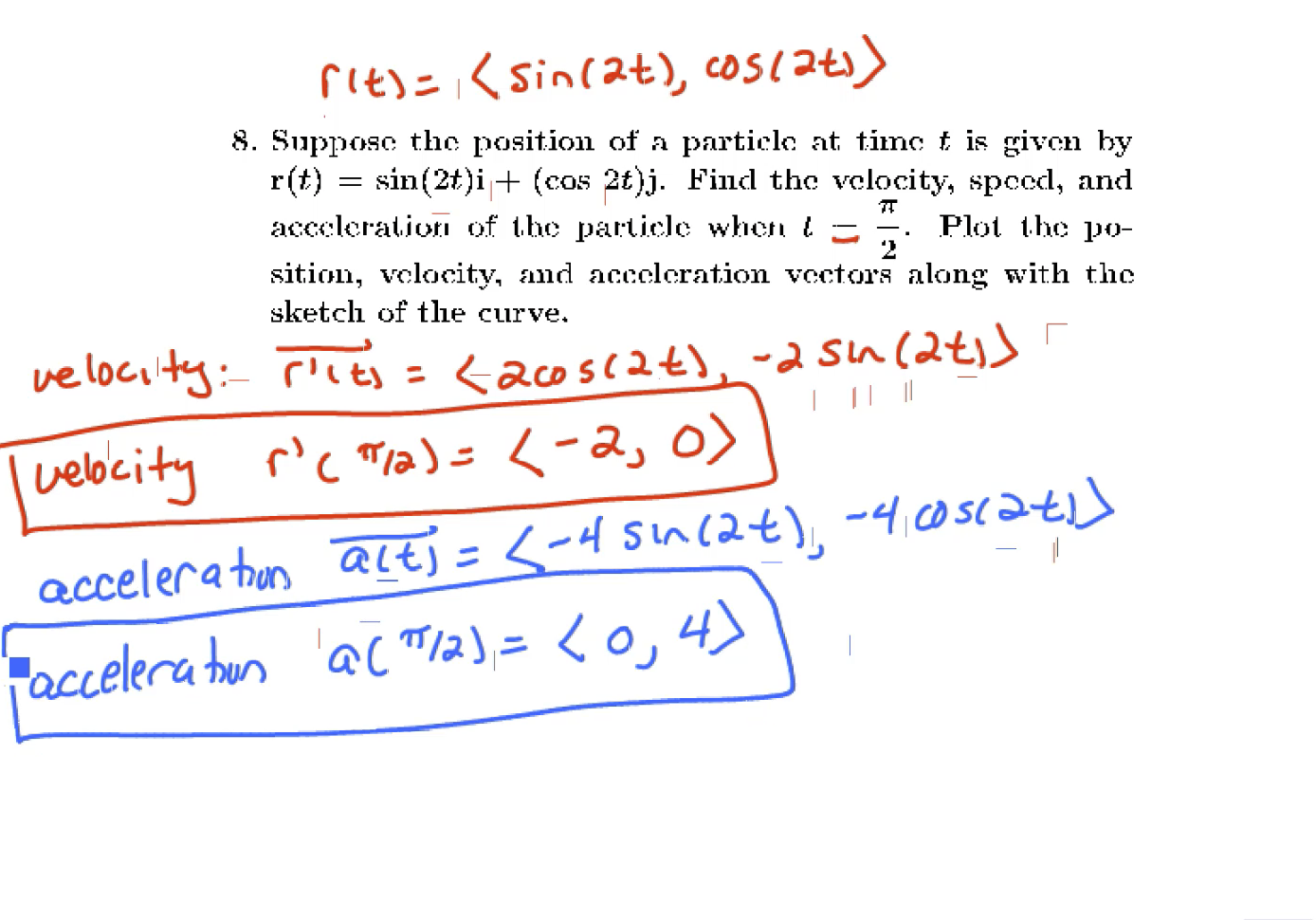
Derivatives and vectors with some physics applications

Reviewing the chain rule and the derivatives and limits of trigonometric functions

Related rates problems, differentials, linear and quadratic approximations

Review of derivatives and tangent lines to functions and vector equations

Mean Value Theorem and using derivatives to find the shape of curves

Evaluating limits of functions

Evaluating limits of functions and using the Squeeze Theorem
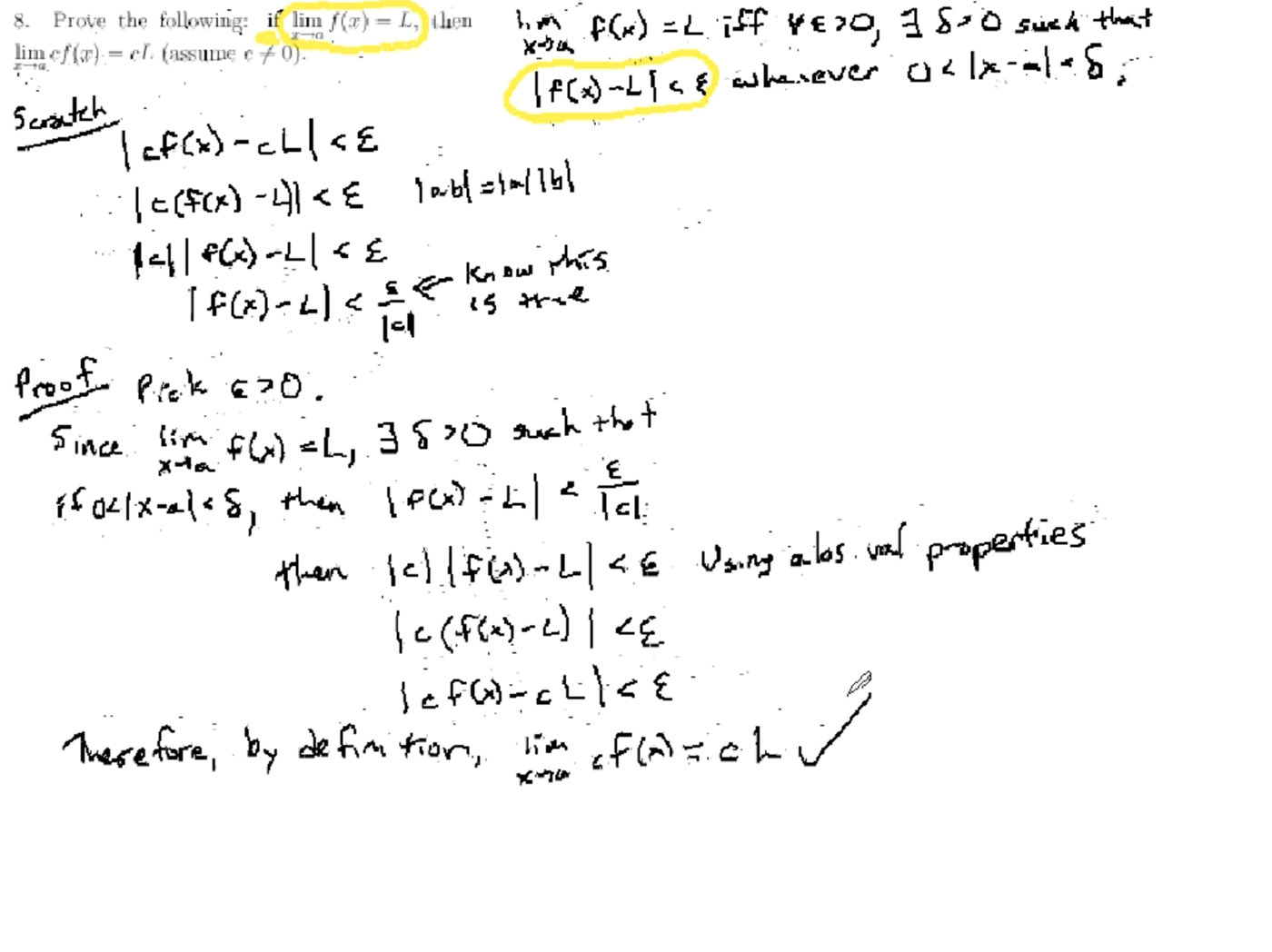
Proving a property of scalar multiplication for limits using the epsilon-delta definition and using the Squeeze Theorem for Limits.

Proving a piecewise function and a polynomial are continuous

Review of derivatives and tangent lines to functions and vector equations

Differentials, linear approximations, and quadratic approximations

Review of derivatives and tangent lines to functions and vector equations

Derivatives and vectors with some physics applications

Derivatives of exponential and logarithmic functions and the exponential model
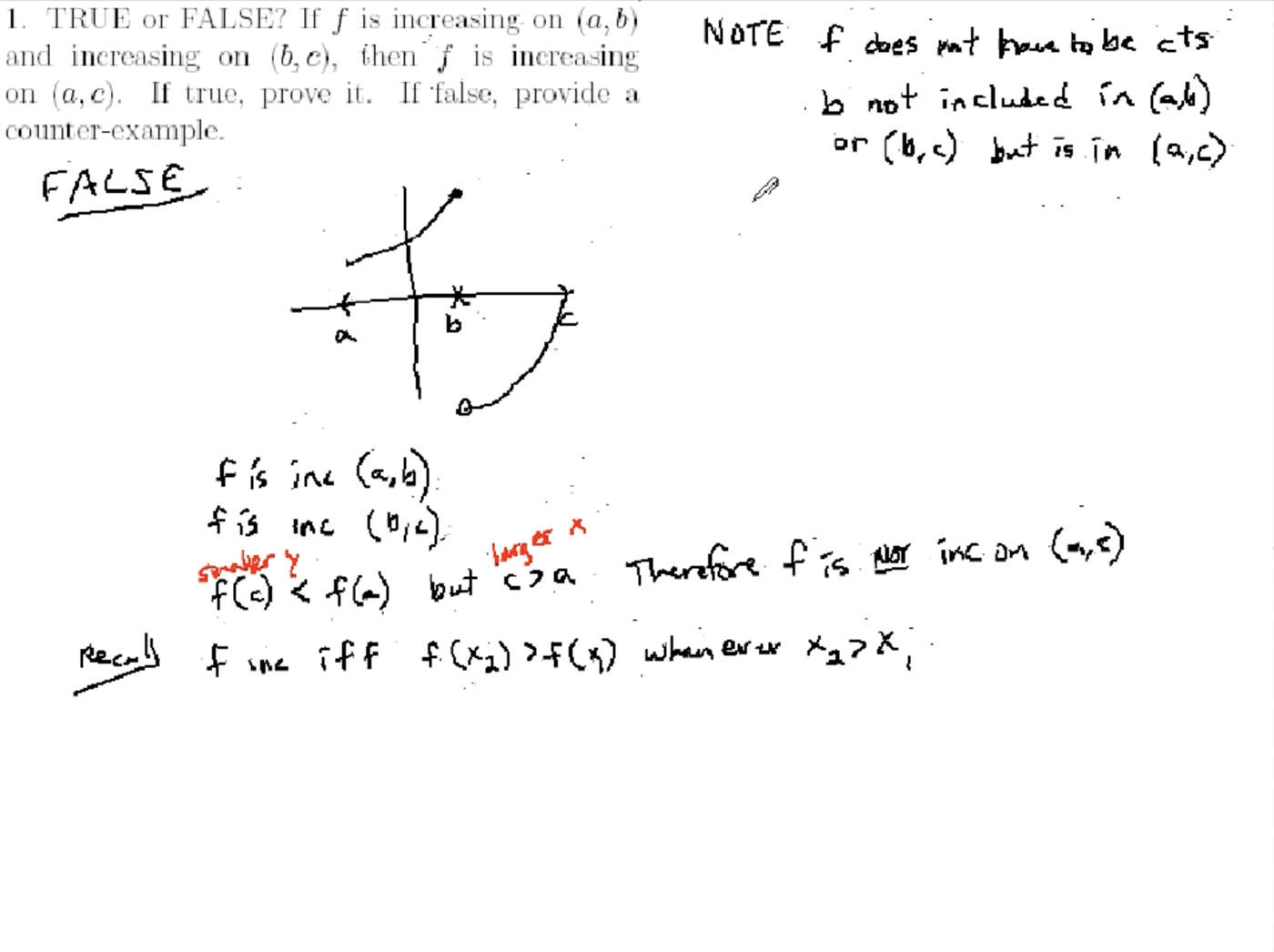
What the derivatives of a function tell us about the shape of its graph
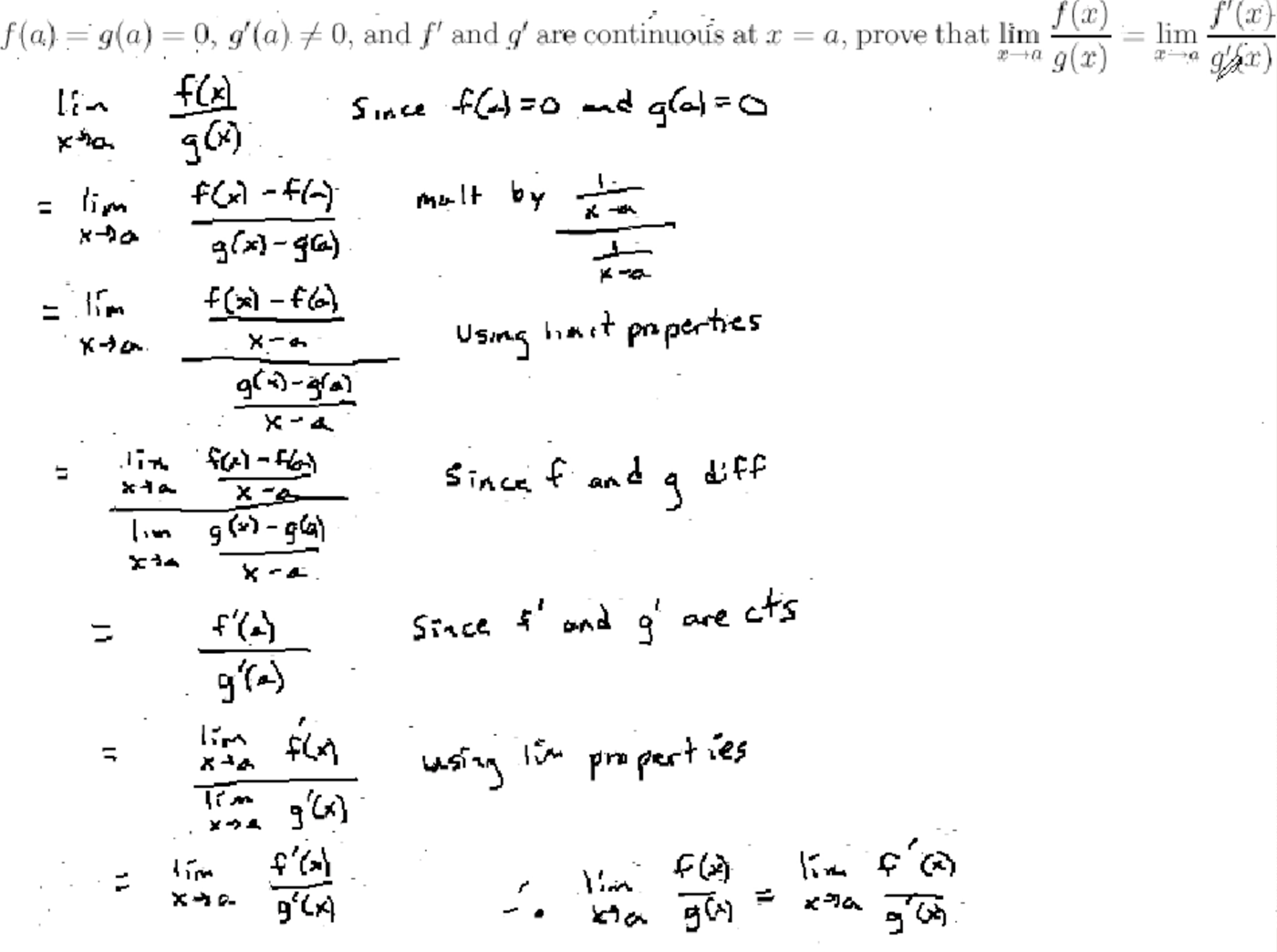
Proving L'Hospital's Rule and using it to evaluate limits

Optimizing values in word problems

Riemann sums, including approximating areas under curves.
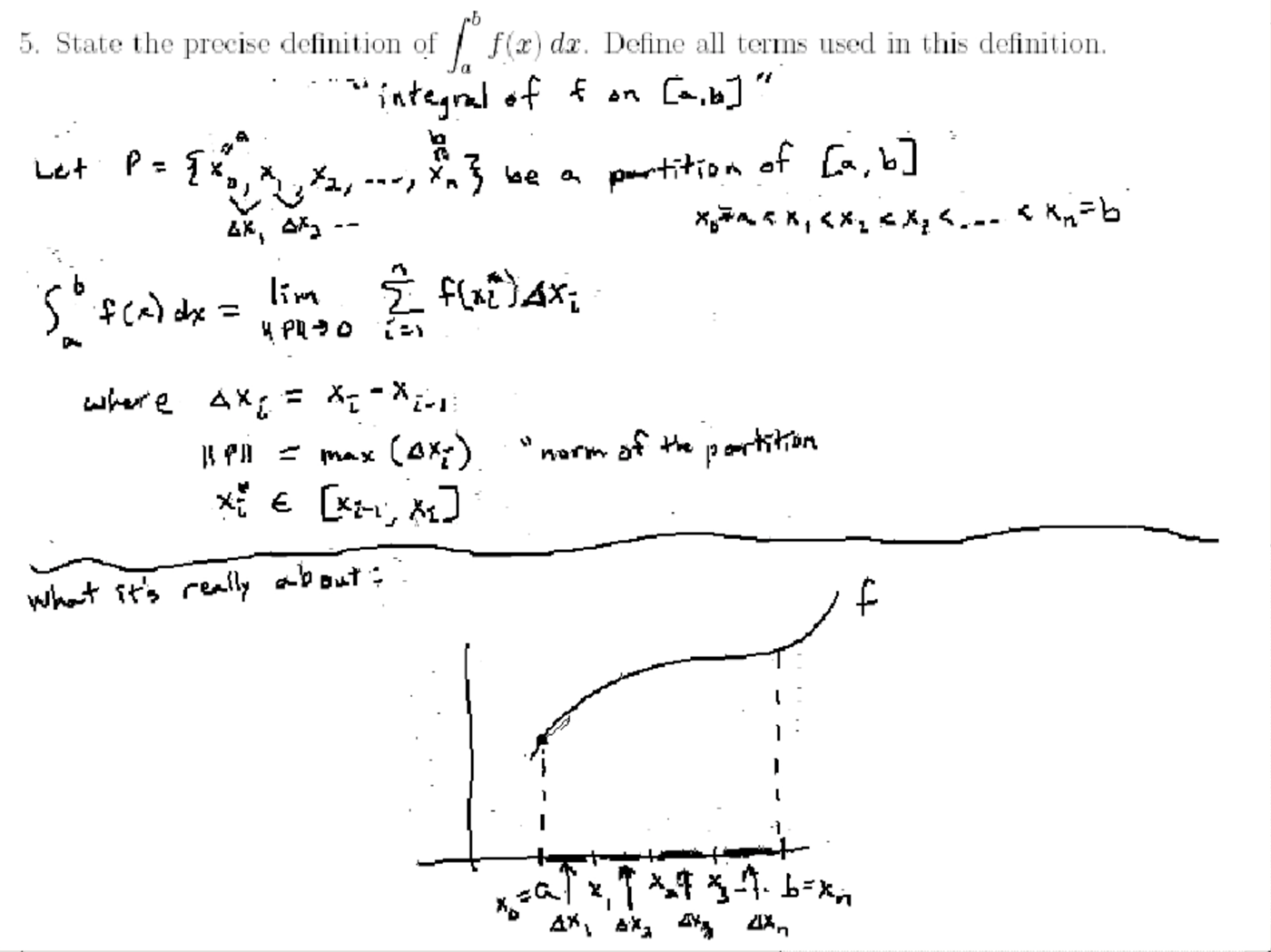
The definition and properties of definite integrals

Using Reimann sums and the Fundamental Theorem of Calculus
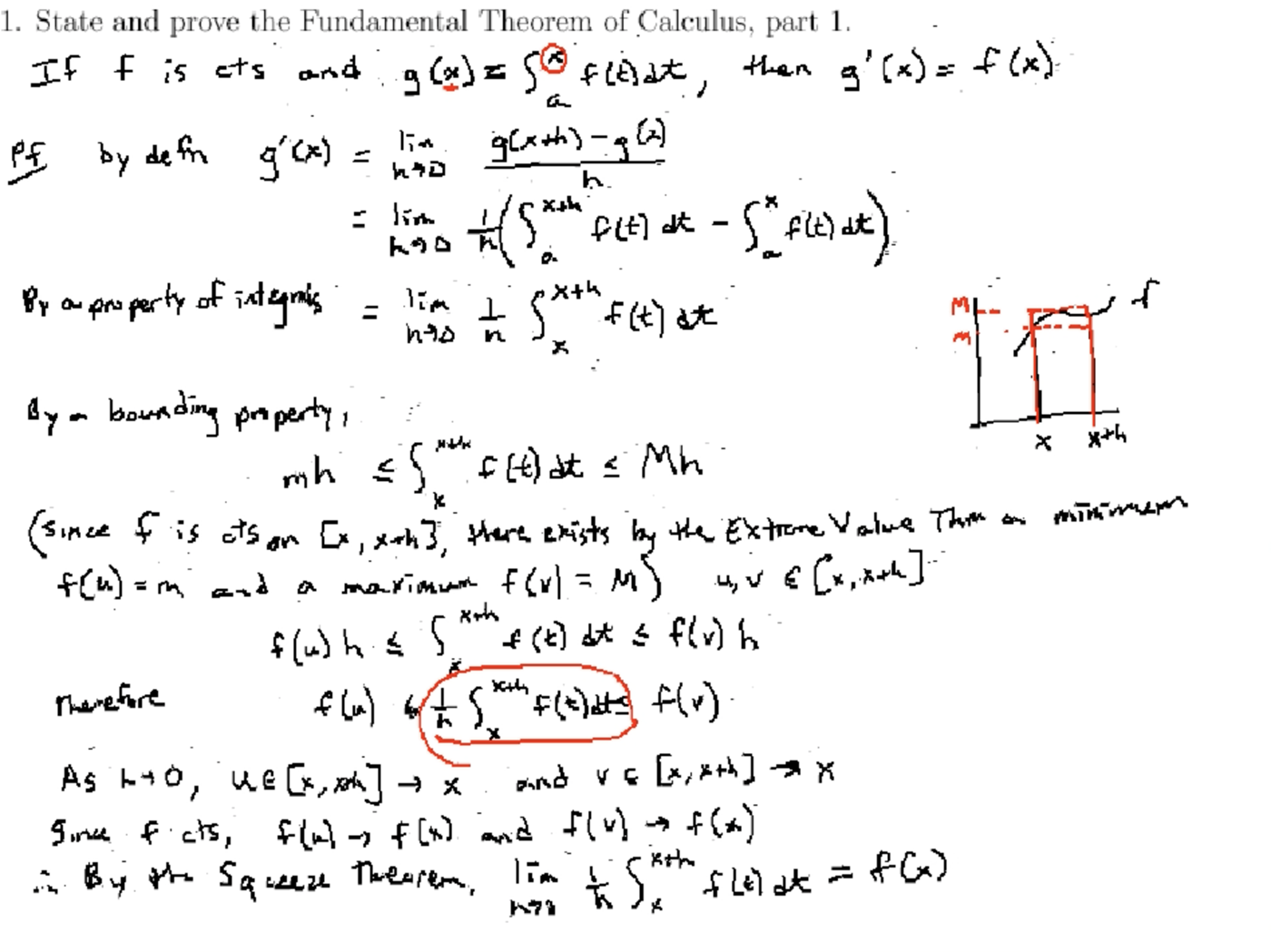
Proving and then applying the Fundamental Theorem of Calculus

Using Reimann sums and the Fundamental Theorem of Calculus

Examples of integration by substitution

Review of work and average value

Reviewing u-Substitution

Review of finding the radius and interval of convergence for a power series

Review of Taylor and Maclaurin Series and their properties

Review of Taylor Polynomials and Taylor's Inequality

Finding a Taylor Polynomial for a function
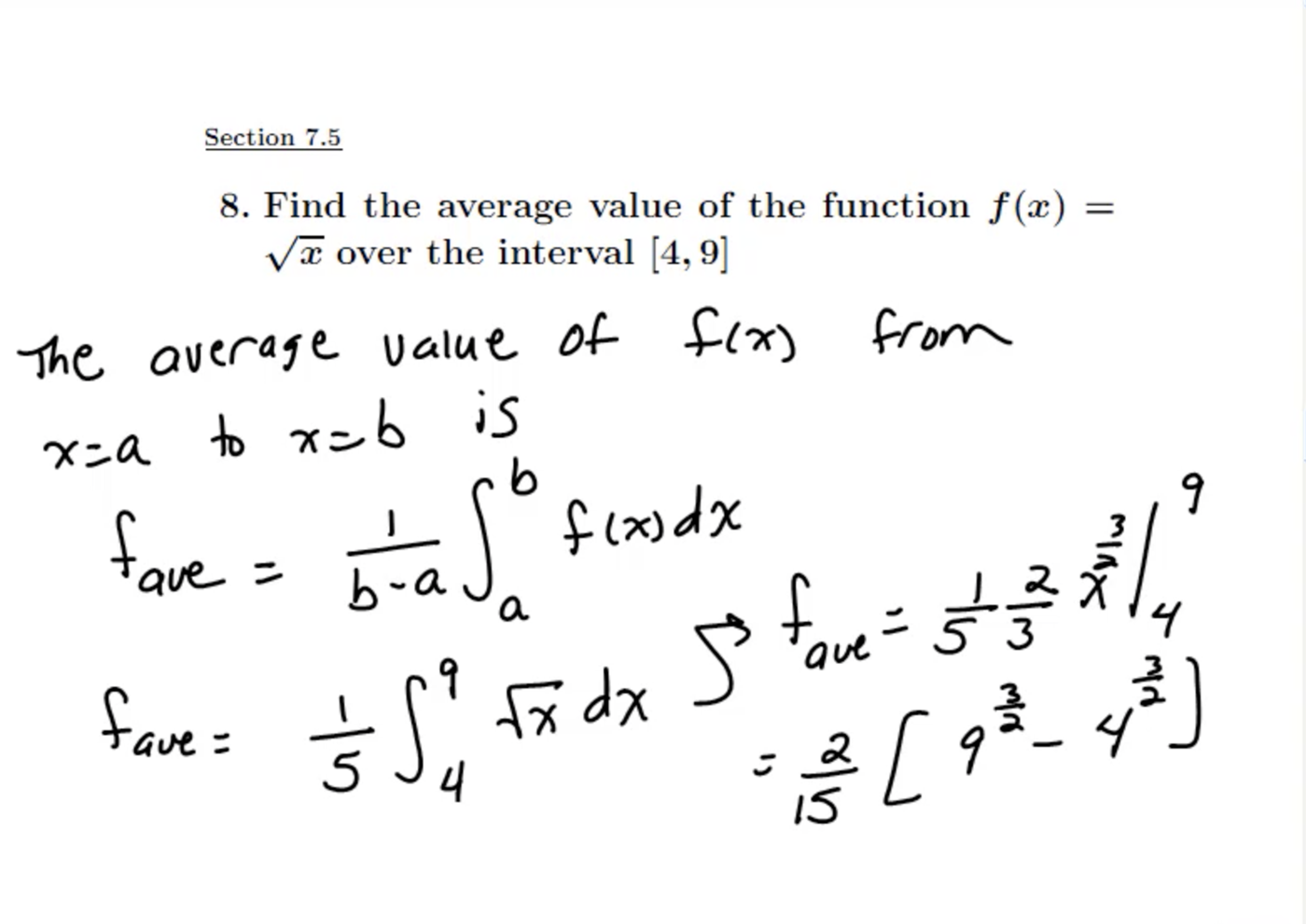
Using integrals to solve work problems and find the average value

Showing how an equation in three dimensional space represents a plane
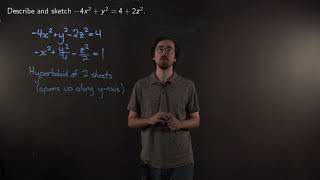
Identifying the equation of a hyperboloid and sketching its graph

Identifying the equation of a cone in three dimensions and sketching its graph

Finding a vector equation for the tangent line to a three-dimensional vector function

Sketching the graph of a function of two variables

Sketching the graph of a function of two variables

Sketching the level curves of a function of two variables

Sketching the level curves of a function of two variables

Describing the level surfaces of a function of three variables

Evaluating a double integral over a given region

Evaluating a double integral over a given region

Evaluating a double integral and sketching the region of integration

Changing the order of integration for a double integral

Evaluating a double integral by reversing the order of integration

Setting up double integrals of Type I and II to give the volume of a solid under a surface

Evaluating a double integral over a circular region by changing to polar coordinates

Evaluating a double integral by changing to polar coordinates

Evaluating a double integral by changing to polar coordinates

Converting a double integral to a double integral in polar coordinates

Writing an iterated integral in polar coordinates that gives the volume of the solid that lies below a paraboloid

Writing an iterated integral in polar coordinates that gives the volume of the solid bounded by a cone

Writing an a triple integral over a given solid as an iterated integral

Evaluating a triple integral over a solid bounded by given surfaces

Writing an iterated integral that gives the volume of a solid

Evaluating a triple integral over a solid bounded by elliptic paraboloids

Writing a triple integral as an iterated integral in cylindrical coordinates

Converting an iterated triple integral into cylindrical and spherical coordinates

Using an iterated integral in spherical coordinates to find the volume of a solid

Evaluating a triple integral for a given solid by writing an iterated integral in spherical coordinates

Using Python to find the equation of the tangent line to a curve and graphing the result

Using Python to plot an implicit curve and find a tangent line using implicit differentiation

Using Python to numerically estimate a limit, graphically estimate a limit, and find the exact limit

Using Python to find the tangent line to a parametric equation and plot the two graphs

Graphing a piecewise function using Python

Defining variables in Python and using the variables in equations

Solving a multistep word problem in Python and graphing the resulting function

Evaluating iterated integrals over the same region but with different orders of integration

Writing and then solving an iterated integral for a given region

Evaluating a double integral over a given region by splitting it into two double integrals

Using double integrals to calculate the weight of a plate given its density and size

Solving a system of linear equations with two variables

Solving a system of two linear equations with two variables using the elimination method

Solving a system of two linear equations using a TI-84 calculator
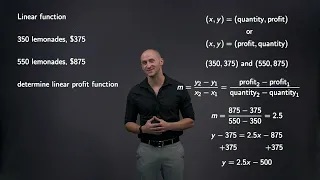
Writing a linear equation of profit from a business word problem
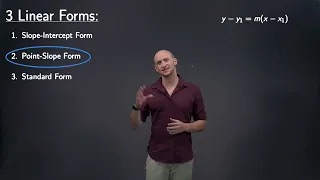
Explaining the main three forms for linear equations

Simplifying power and exponential expressions using properties of exponents

Simplifying power and exponential expressions using properties of exponents

Simplifying power and exponential expressions using properties of exponents

Simplifying an expression with both power and exponential functions using properties of exponents
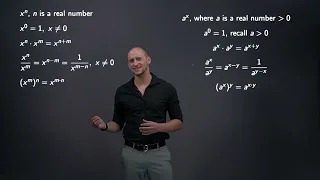
Properties of exponents applied to power and exponential expressions
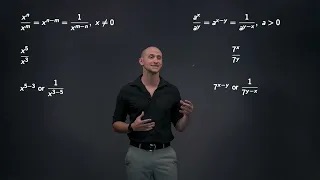
Properties of multiplying and simplifying power and exponential expressions

Properties of exponents applied to power and exponential expressions
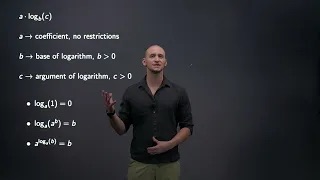
Explaining the terminology and rules of logarithms
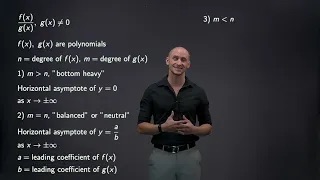
Finding horizontal asymptotes for rational functions
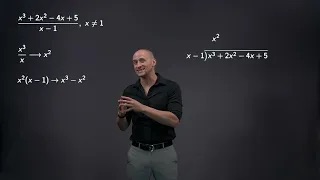
Explaining how to do polynomial long division

Finding horizontal asymptotes for rational functions

Determining the end behavior and horizontal asymptotes for rational functions

Explaining basic algebraic operations for fractions

How to simplify rational expressions

Adding and subtracting rational expressions by finding a common denominator

Sketching the level curves for a function of two variables

Introducing functions of several variables and level curves

Determining if a list of vertices in a graph is a path, a circuits, an Euler path, an Euler circuit, or none of the above
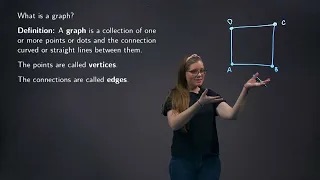
Explaining that a graph is a collection of vertices and edges

Drawing a graph to depict a bus route

Counting the vertices and edges from a graph

Identifying the adjacent vertices in a graph

Finding two different paths between vertices in a graph

Determining if a list of vertices in a graph is a path, circuit, Euler path, Euler circuit, or none of the above

Determining if a list of vertices in a graph is a path, a circuits, an Euler path, an Euler circuit, or none of the above

Determining if a list of vertices in a graph is a path, a circuits, an Euler path, an Euler circuit, or none of the above

Determining if a list of vertices in a graph is a path, a circuits, an Euler path, an Euler circuit, or none of the above

Determining if a list of vertices in a graph is a path, a circuits, an Euler path, an Euler circuit, or none of the above

Explaining Euler's Theorem on when a graph has an Euler path or Euler circuit

Finding the valence of each vertex in a graph

Explaining Hamiltonian Circuits and paths, the Method of Trees to find them, and the number of Hamiltonian circuits for complete graphs

Determining if a graph has a Hamiltonian path, Hamiltonian Circuit, or neither

Determining if a graph has a Hamiltonian path, Hamiltonian Circuit, or neither

Determining if a graph has a Hamiltonian path, Hamiltonian Circuit, or neither

Determining if a graph has a Hamiltonian path, Hamiltonian Circuit, or neither

Using the method of trees to find all Hamiltonian circuits of a graph starting at a given vertex

Determining if a graph is a complete graph

Determining if a graph is a complete graph

Determining if a graph is a complete graph

Determining if a graph is a complete graph

Finding two spanning trees for a graph

Introducing functions of several variables and level curves

Explanation of graphs for data and which are appropriate for categorical or numerical data
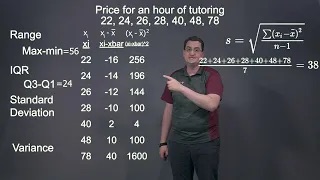
Finding the range, IQR, standard deviation, and variance for a given set of data

Explaining the Pythagorean Theorem and using it to find a missing side in a right triangle

Solving a system of linear equations and giving a geometric interpretation of the solution

Solving a system of two linear equations in two unknowns by graphing

Writing the domain of functions with radicals in interval notation

Finding the domain, intercepts, holes, and vertical asymptotes for a rational function

Finding the domain of a piecewise-defined function and evaluating it for given x-values

Finding properties of a polynomial function such as the degree, end behavior, y-intercept, etc.

Finding properties of a polynomial function such as the degree, end behavior, y-intercept, etc.

Stating the domain in interval notation of a function with radicals, fractions, and exponentials

Find the domain of a function in interval notation with a fraction and logarithm

Finding the roots of a function with an absolute value

Using the quadratic formula to find the roots of a function

Finding the roots of a cubic polynomial

Finding the domain of a rational function

Finding the domain of a rational function

Finding the composition of two functions with a square root and a fractional exponent

Finding the inverse of a linear function and its domain

Finding the inverse of a rational function and its domain

Finding the inverse of a rational function and its domain

Finding the domain and x-intercepts of a logarithmic function

Finding the domain and x-intercepts of a logarithmic function

Solving a logarithmic equation using properties of logarithms

Solving a logarithmic equation using properties of logarithms